The Beatles first single was released on October 5, 1962. The Beatles first entered EMI Studios on Abbey Road on June 6, 1962, when the band’s lineup was John Lennon on rhythm guitar, Paul McCartney on bass, George Harrison on lead guitar and Pete Best on drums. Four songs were recorded that day: “Besame Mucho”, “Love Me Do”, “P.S. I Love You” and “Ask Me Why”. In August, 1962, Pete Best was fired and replaced by Ringo Starr. On September 4, 1962, the Beatles returned to Abbey Road to record their first single. The Beatles recorded a number of takes of “Love Me Do” and, much against their wishes, “How Do You Do It”. Ringo played drums. On September 11, 1962, the Beatles recorded “Love Me Do”, “P.S. I Love You” and “Please Please Me”, which features Paul on lead vocal and bass, supported by John and George on backing vocals and guitars. Andy White, the drummer of the studio, plays the drums. Ringo played tambourine and maracas. But on the first pressings used the version of “Love Me Do” with Ringo’s drumming recorded on September 4.
Demo: The demo copy, was reportedly one of just 250 made for radio station airplay in 1962. Demo copies miscredit McCartney as McArtney. The records were housed in a special blue “Top Pop” sleeve.
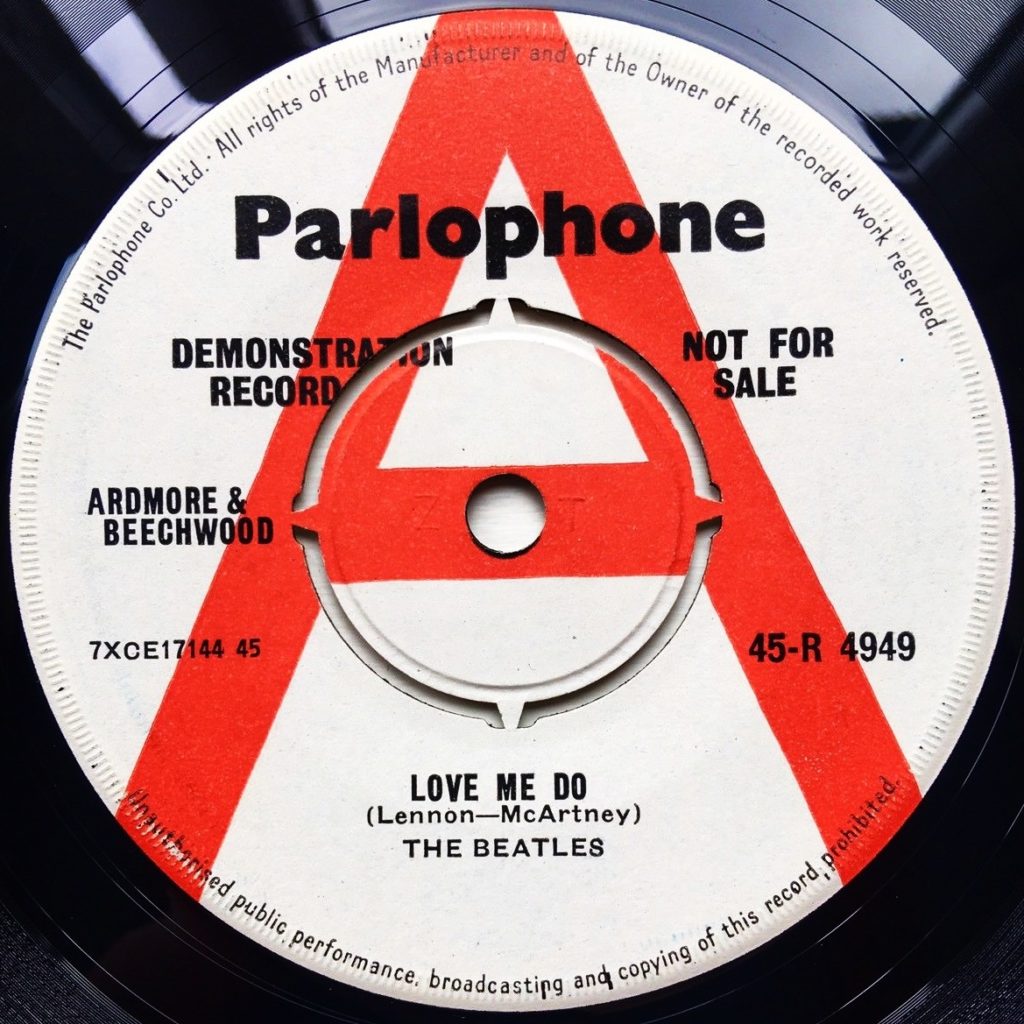
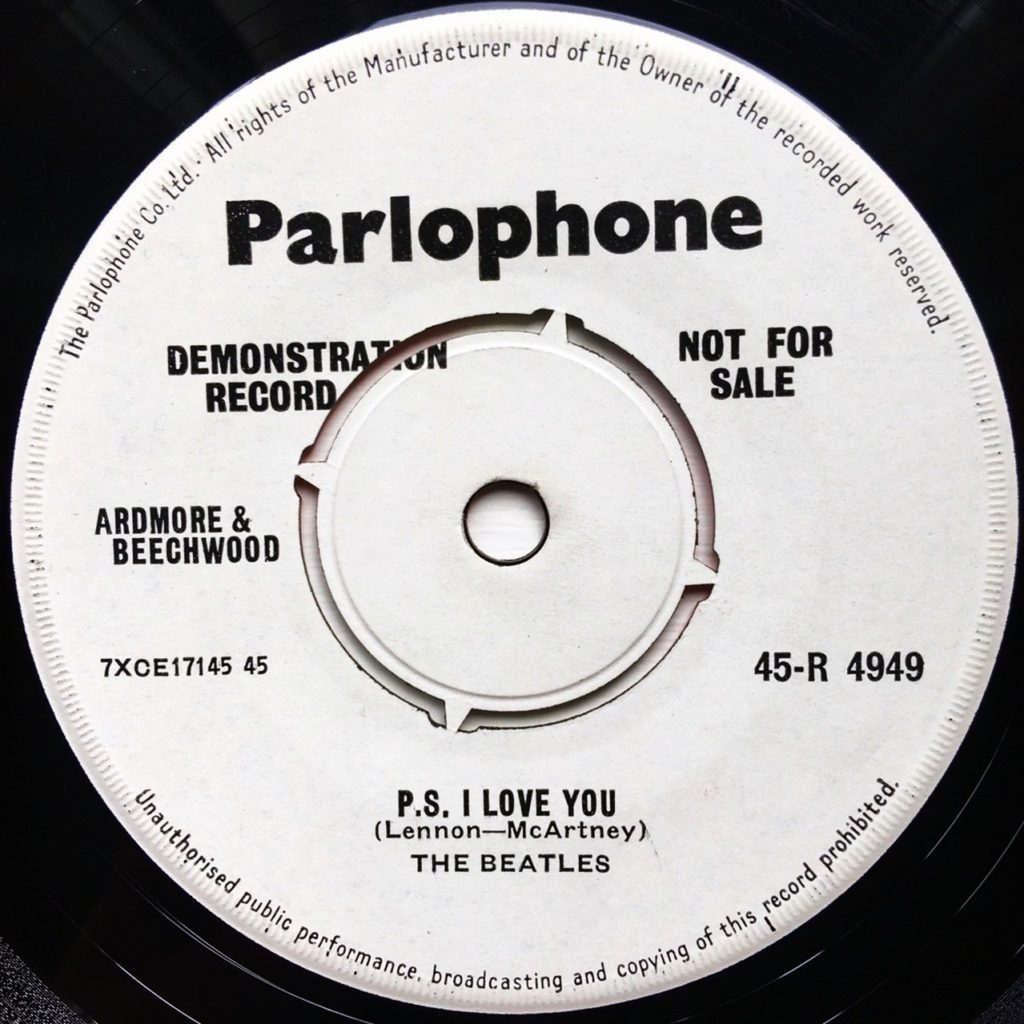
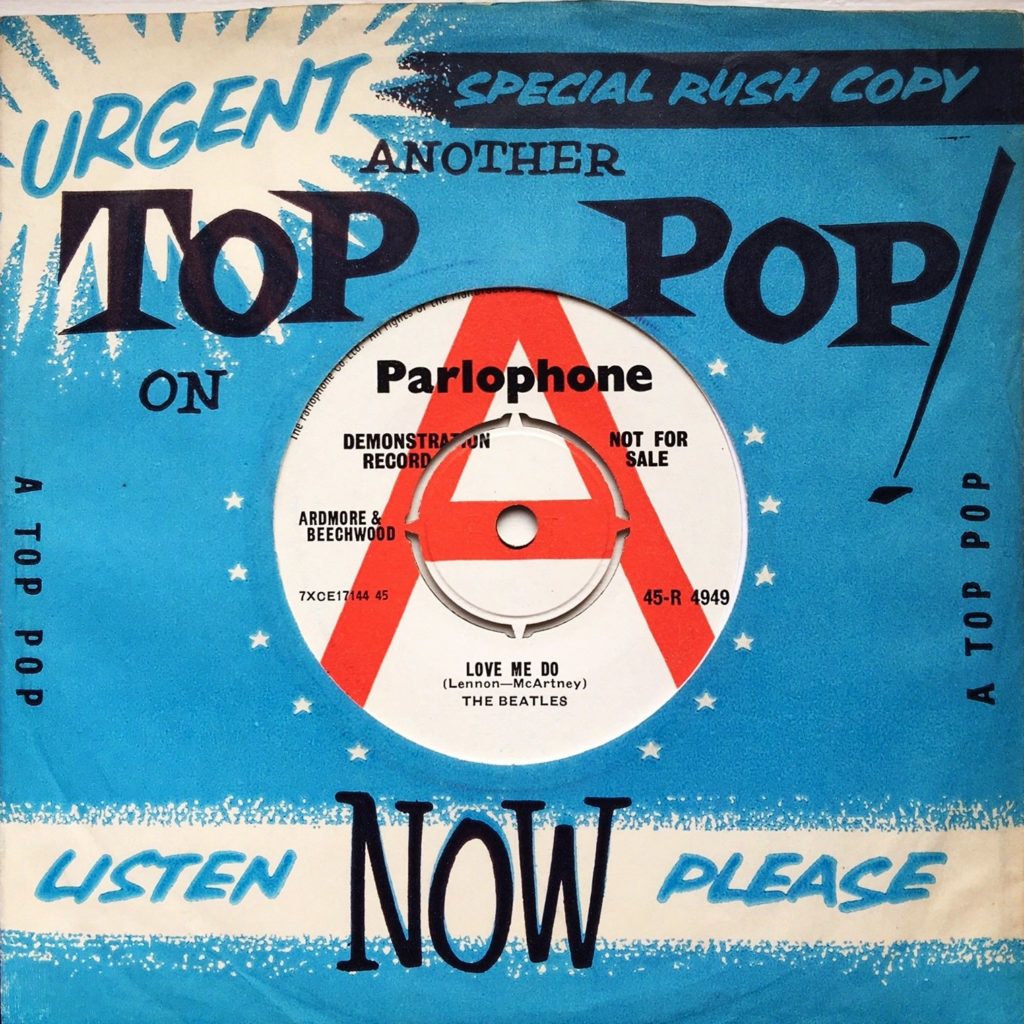
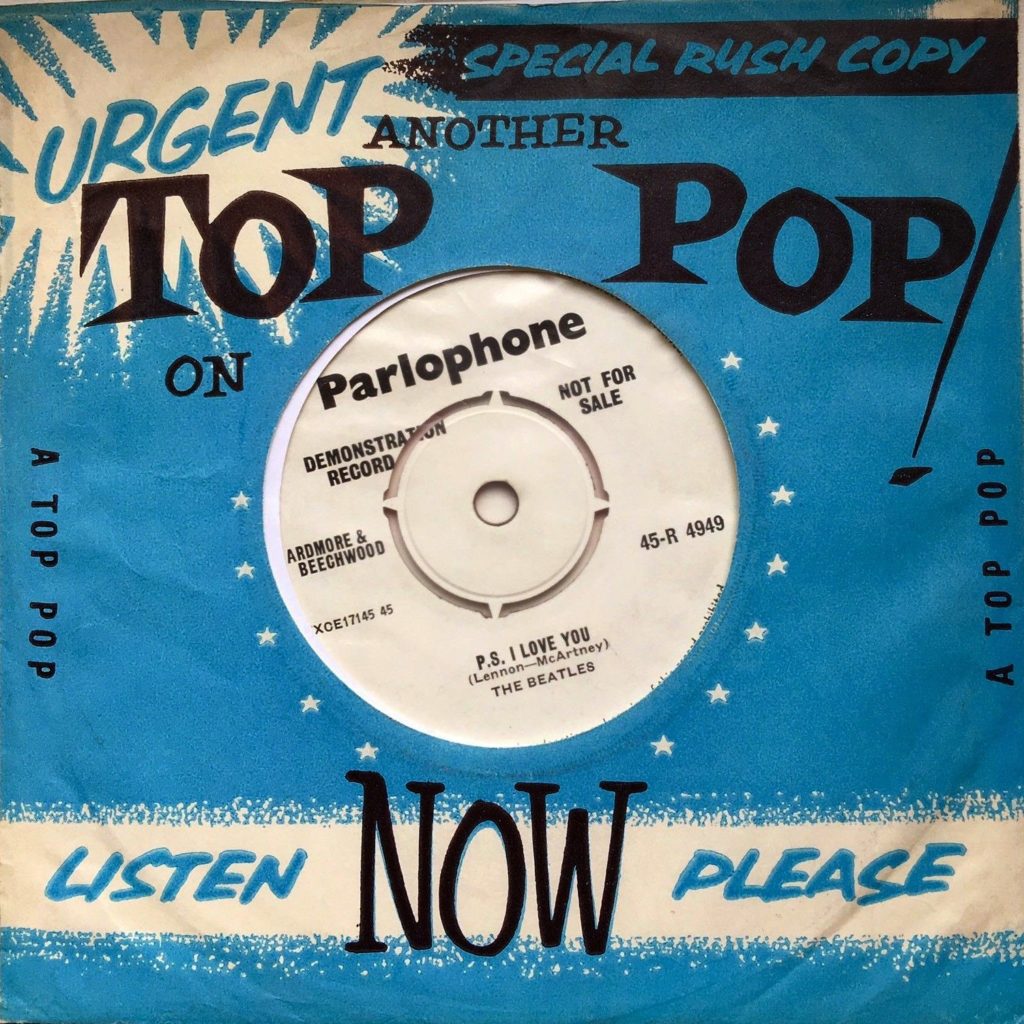
1. First pressing, 45-R 4949, October 5, 1962. The records were housed in Type 1 or Type 2 company sleeves. Red label with silver print. Catalog number with 45 prefix. These labels have “PARLOPHONE” in large stylized letters at the top and the Parlophone £ logo at 3 o’clock. The publishing year was printed on the label, as “RECORDING FIRST PUBLISHED 1962″. Red label pressings can be found with ZT, WOZT, MPZT or PT tax code, or without. Matrix numbers: Side A: 7XCE 17144-1N, Side B: 7XCE 17145-1N.
Type 1 labels have “MADE IN GT. BRITAIN” printed below the Parlophone £ logo:
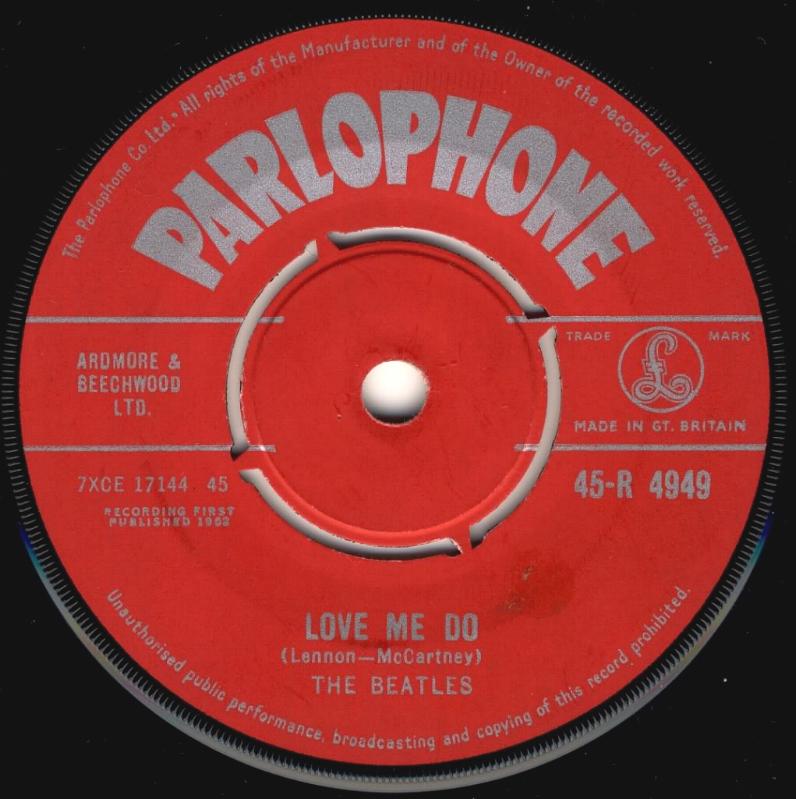
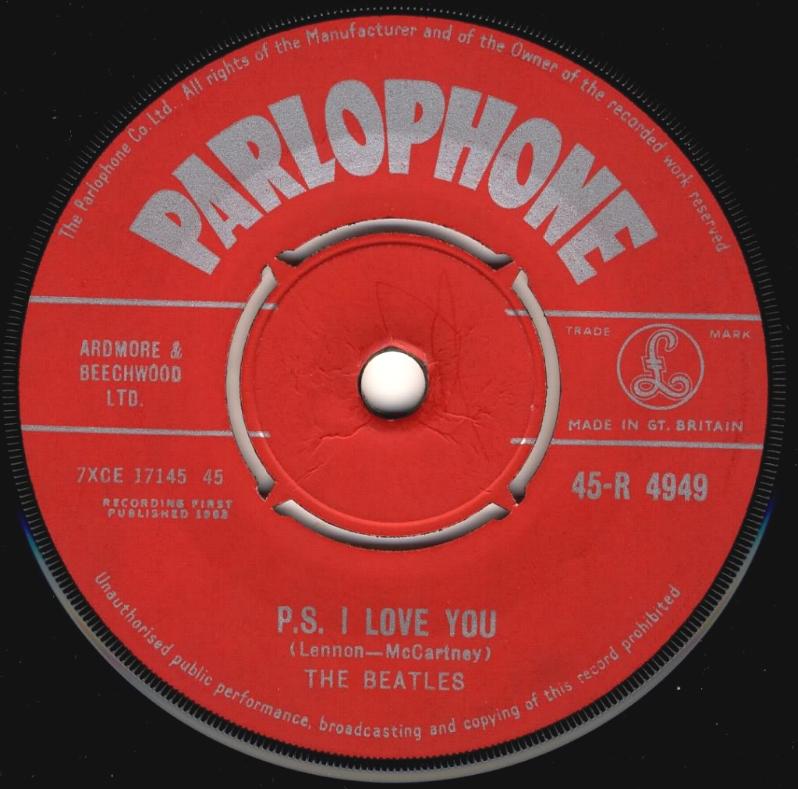
Type 2 labels do not have “MADE IN GT. BRITAIN”:
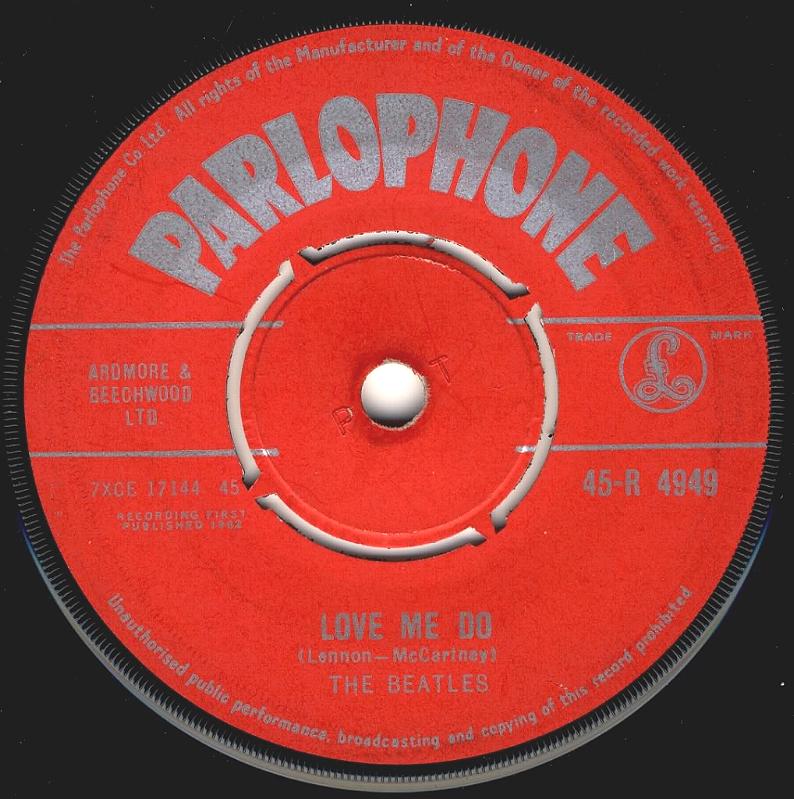
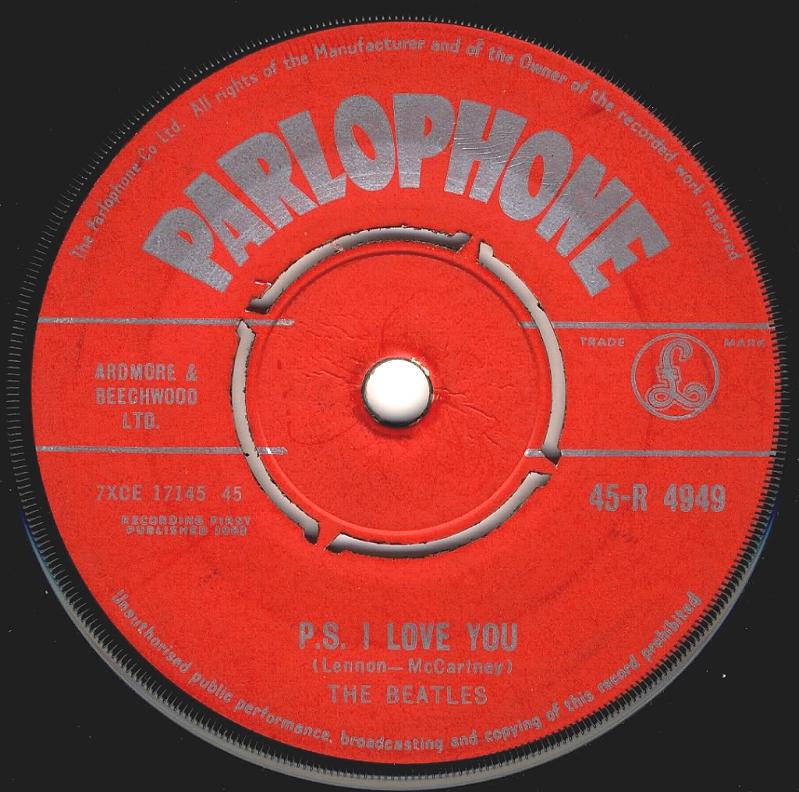
2. Second pressing, R 4949, autumn 1963. Standard procedure at Abbey Road Studios at the time was to erase the original two-track session tape for singles once they had been “mixed down” to the (usually monaural) master tape used to press records. This was the fate of two Beatles singles (four songs): “Love Me Do”, “P.S. I Love You”, “She Loves You”, and “I’ll Get You”. However, at some point the mixdown master tape for this song was also lost, and apparently no backup copies had been made. Thus, for many years the only extant recorded copies were the red label Parlophone 45 rpm vinyl records pressed in 1962. By the time the tapes had disappeared, the song’s 11 September 1962 remake featuring Andy White had been released. EMI would not have been too concerned about the loss of the 4 September take, therefore, as it was now considered obsolete, and they may not have anticipated ever having any use for it again anyway.
The original tape of “Love Me Do” It was removed at the time the Beatles’ Hits EP came out (August-September 1963). Therefore, for the second press “Love Me Do” was used Andy White version. In 1967, when Ringo’s version was discontinued from the EMI catalog, the lacquer, mother, and all stampers for the UK 45 were destroyed, thus making it impossible to press any further first-generation releases.
Black label with silver print. The publishing year was printed on the label, as “RECORDING FIRST PUBLISHED 1962″. “Parlophone Co. Ltd” printed at the start perimeter print. Can be found with PT, MT, MPT or KT tax code. Push-out center. Matrix numbers: Side A: 7XCE 17144-1N, Side B: 7XCE 17145-1N.
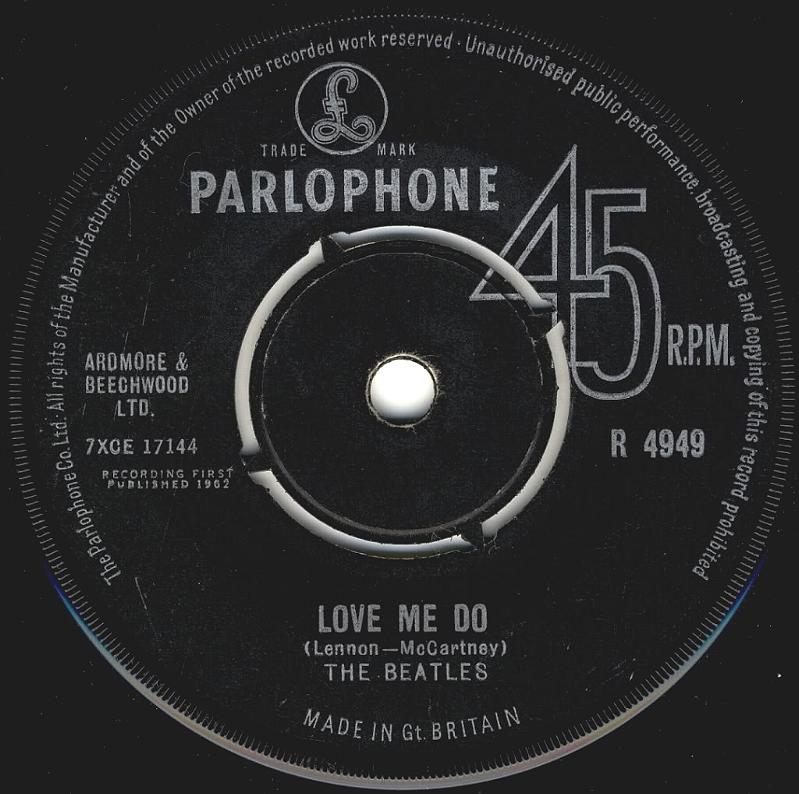
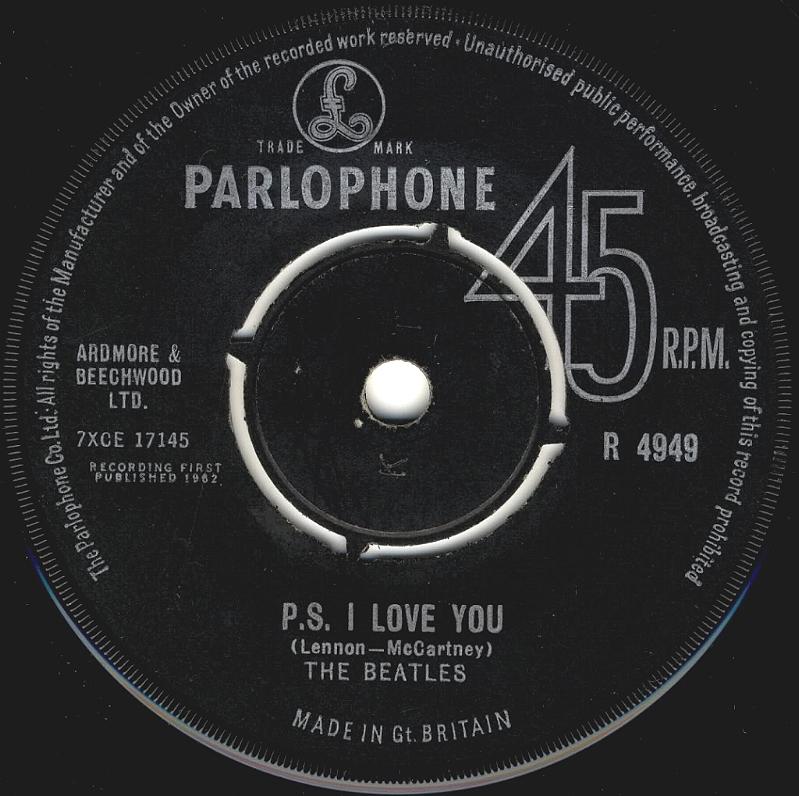
3. Third pressing, R 4949, 1964. Black label with silver print. The publishing year was printed on the label, as “RECORDING FIRST PUBLISHED 1962” and “SOLD IN U.K. SUBJECT TO RESALE PRICE CONDITIONS, SEE PRICE LISTS” text. Tax code KT. Push-out center. Matrix numbers: Side A: 7XCE 17144-1N, Side B: 7XCE 17145-1N.
Type 1 labels have “Parlophone Co. Ltd” printed at the start perimeter print:
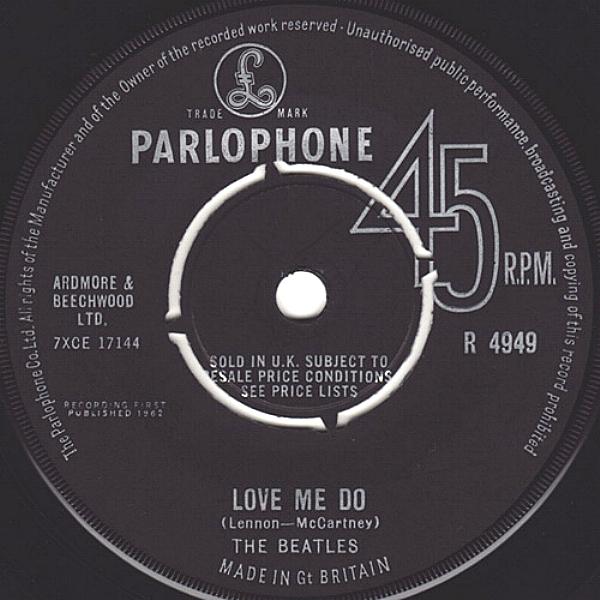
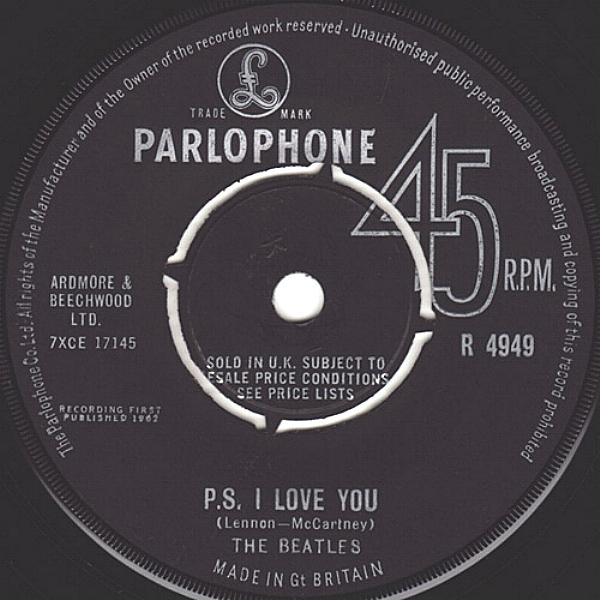
Type 2 labels have a fully capitalized “PARLOPHONE CO. LTD” printed at the start perimeter print and PARLOPHONE TRADEMARK logo’s are now smaller:
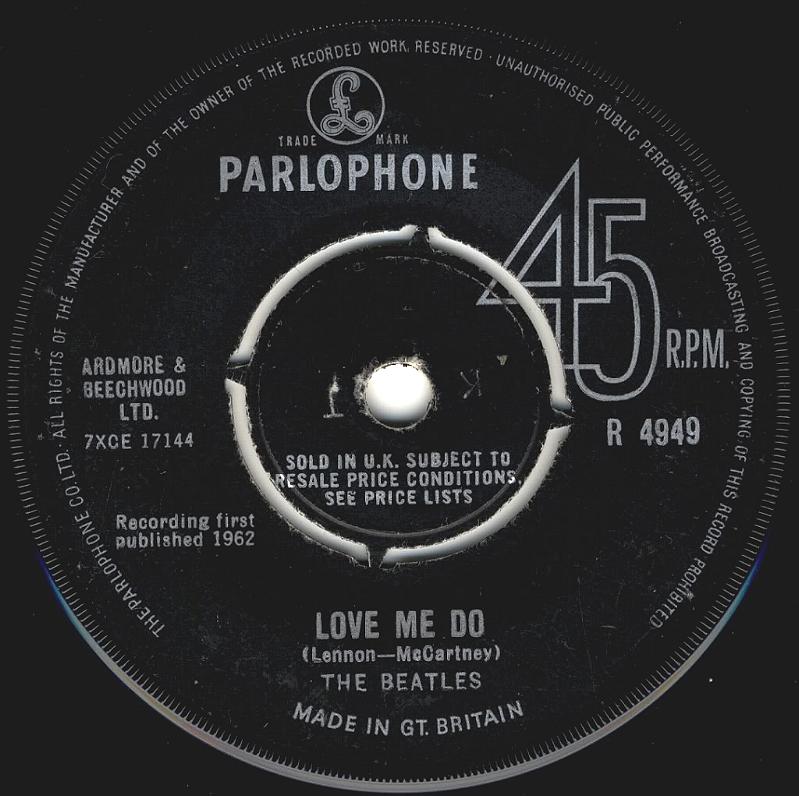
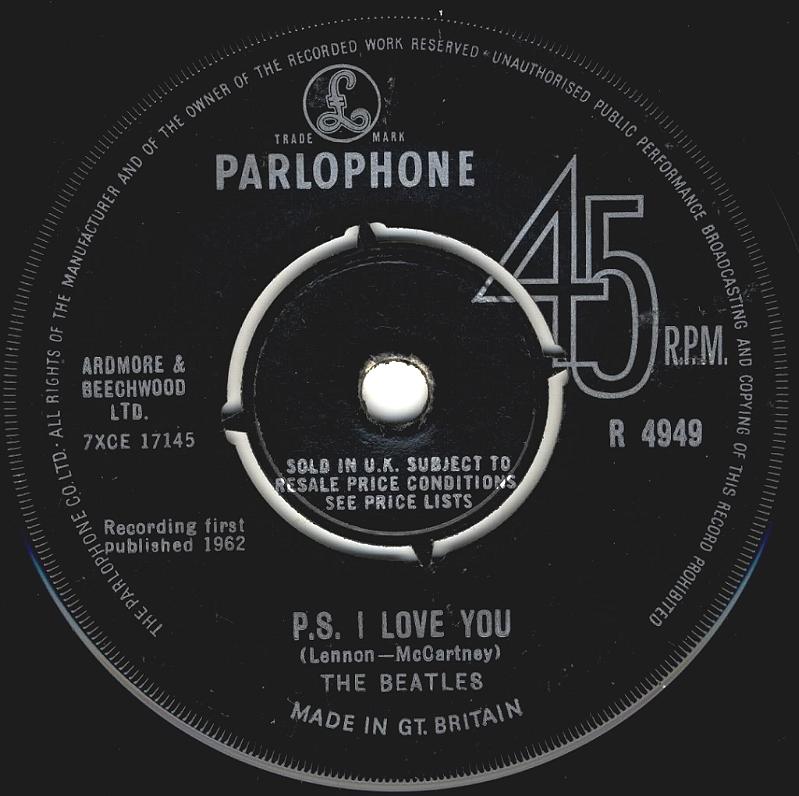
4. Fourth pressing, R 4949, March 6, 1976. From “The Beatles Singles Collection 1962-1970″ box set (BS-24). These pressings have original top-opening sleeve with green front and pictures back.
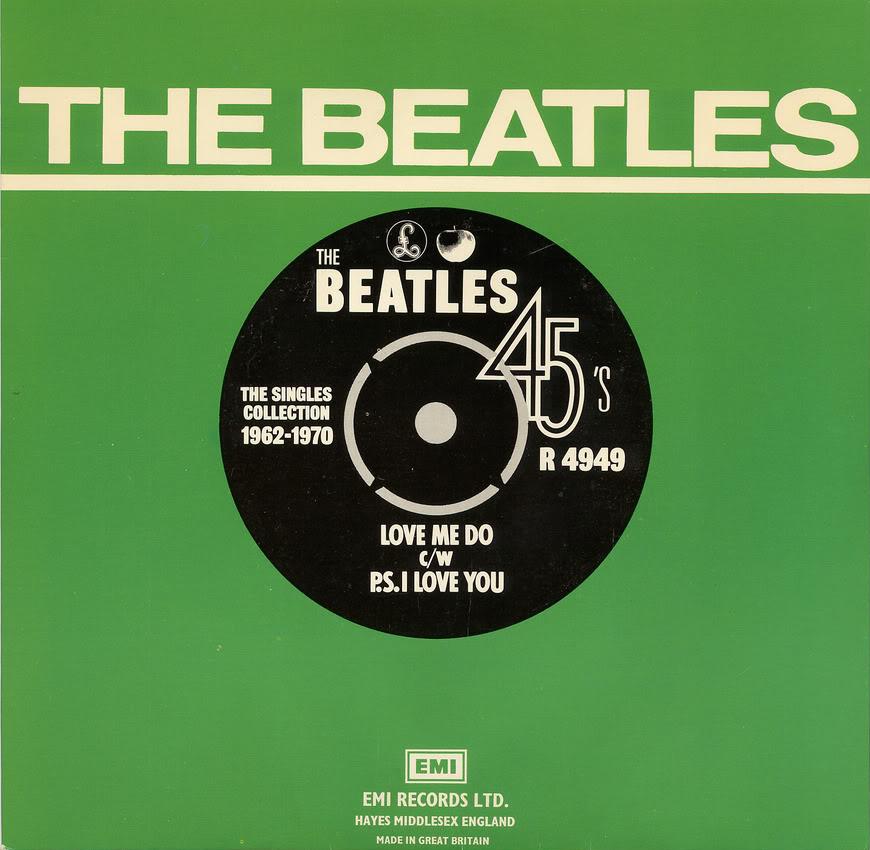
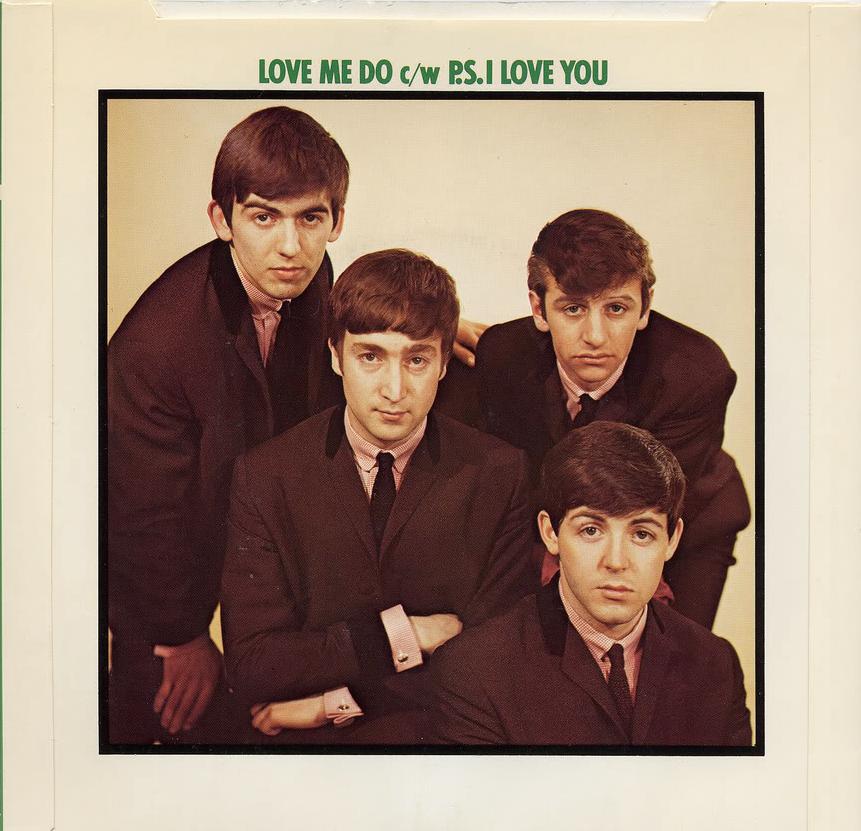
Black label with silver EMI logo and silver print. “THE EMI RECORDS LTD” printed at the start perimeter print and “MADE IN GT BRITAIN” printed at the end of the perimeter print. Publishing year printed as: (p) 1962. Matrix numbers: Side A: 7XCE 17144-2, Side B: 7XCE 17145-2.
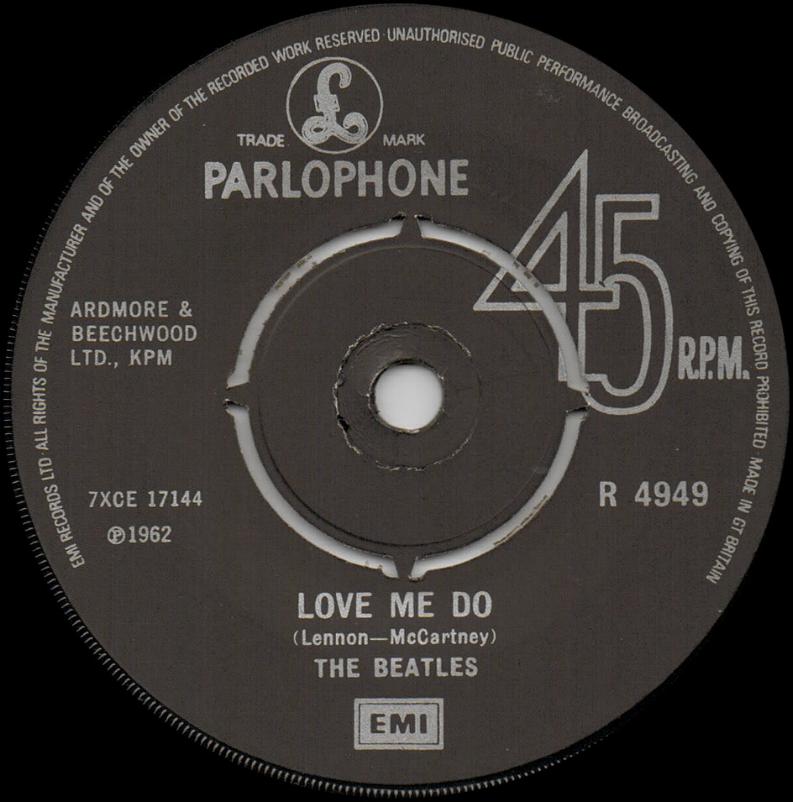
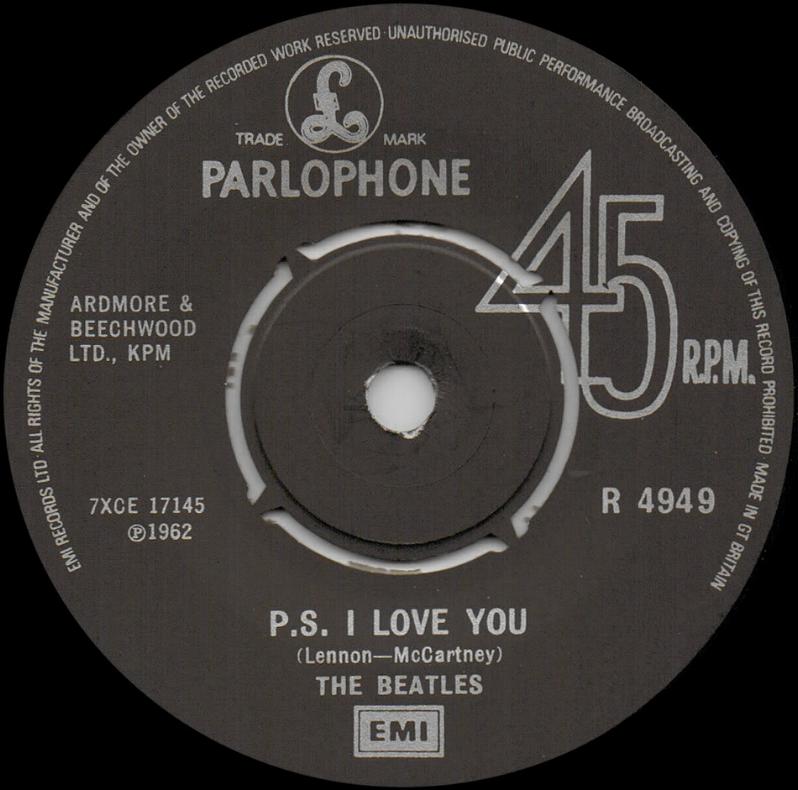
5. Fifth pressing, October 5, 1982. 20th Anniversary edition “Special 12” Single Featuring Rare Recording Of “love Me Do”, Parlophone 12R4949. The single contains both versions of “Love Me Do” recorded on September 4 and September 11, 1962. These pressings have original side-opening pictures sleeve.
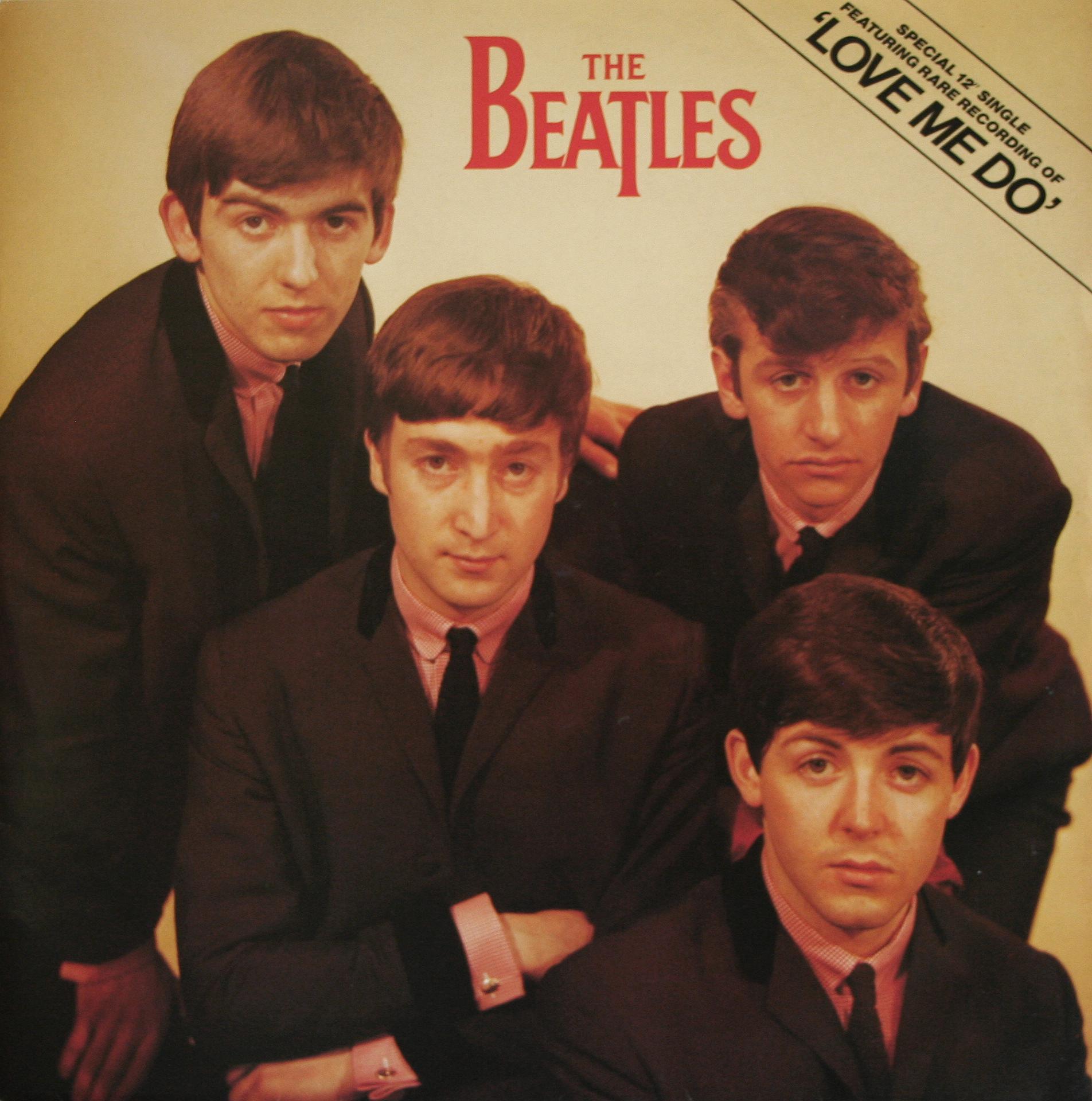
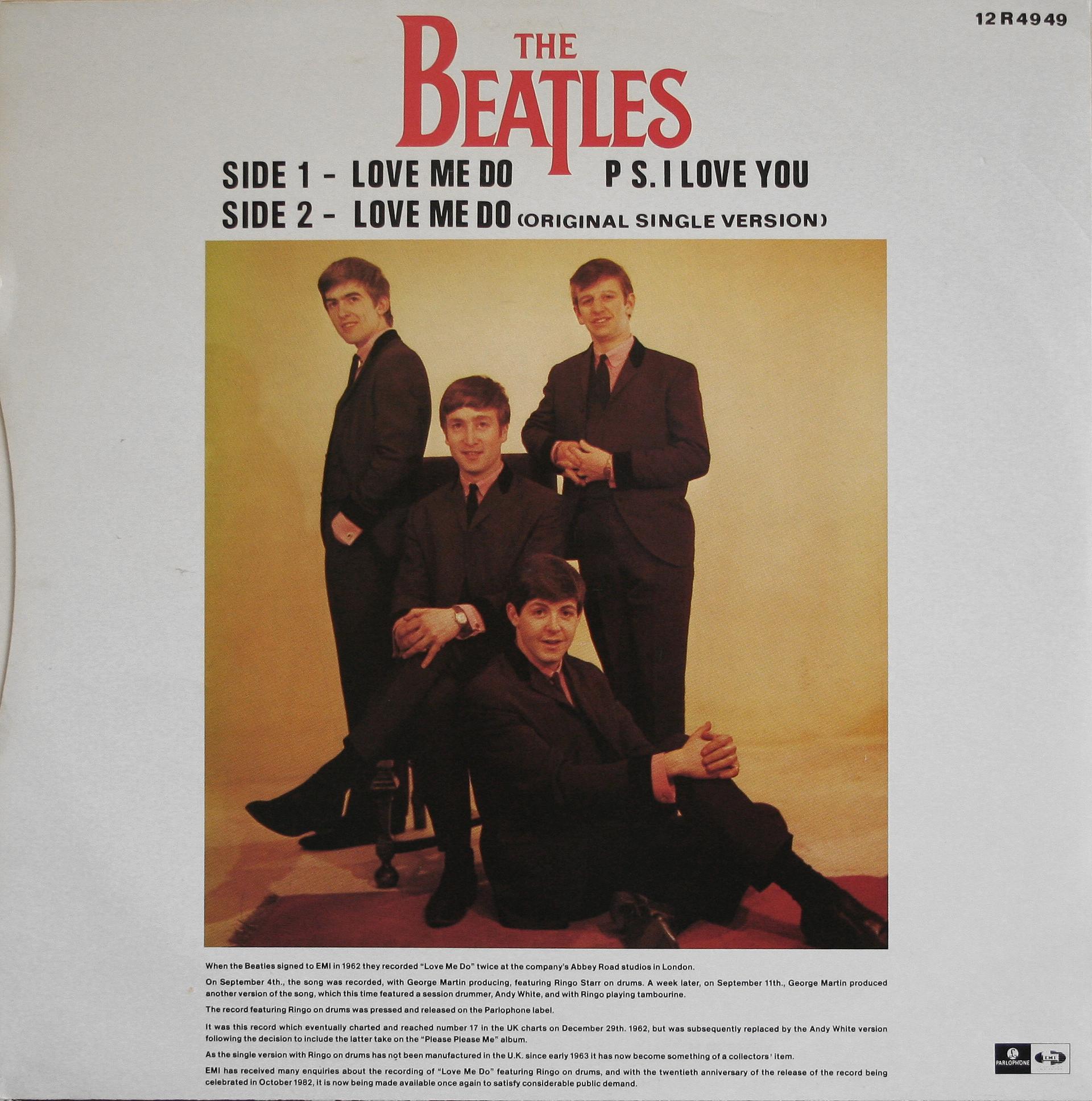
Matrix numbers: Side 1: 12R4949 A-1-1-1 / Side 2: 12R4949 B-1-1-1.
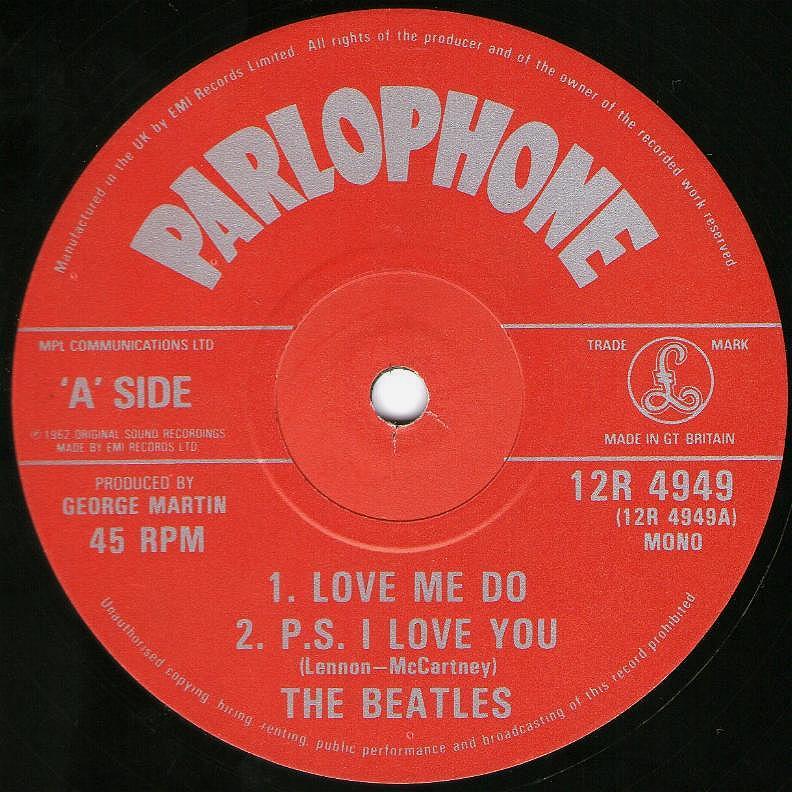
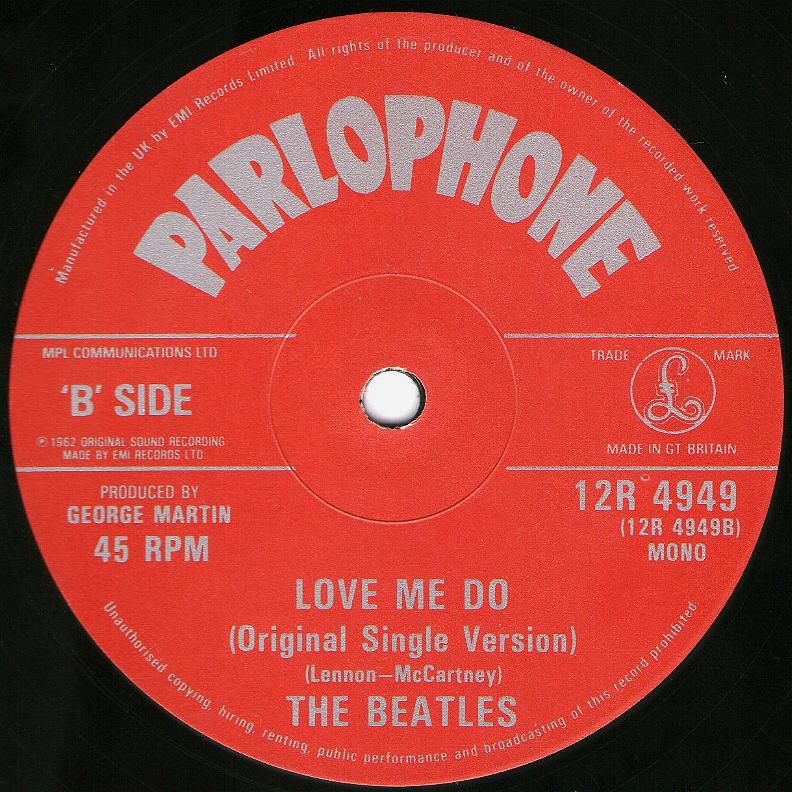
6. Sixth pressing, 45-R 4949, December 6, 1982. From “The Beatles Singles Collection” blue box set (BSCP-1). These pressings have original top-opening pictures sleeve.
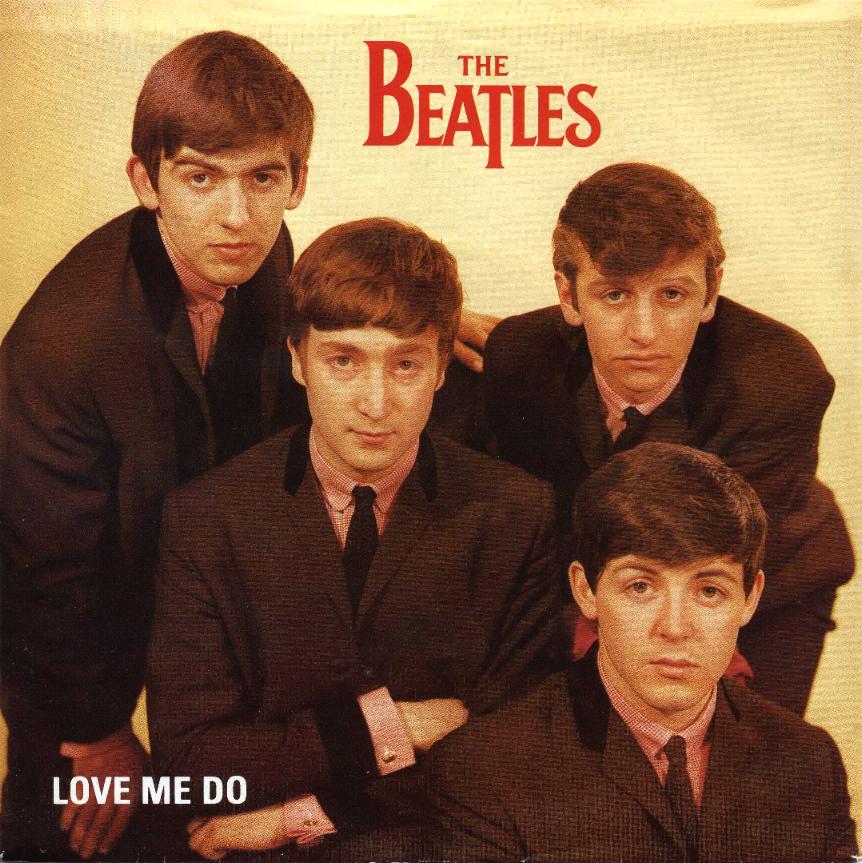
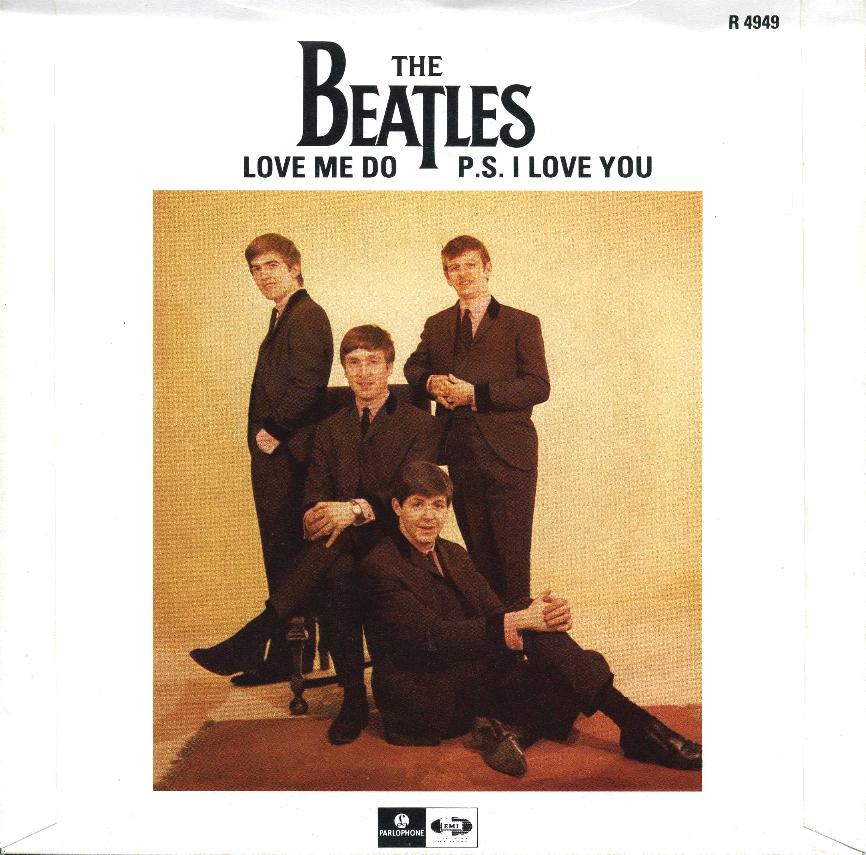
Returned at the old style. Red label with silver print. These labels have “PARLOPHONE” in large stylized letters at the top and side numbers as ‘A’ SIDE and ‘B’ SIDE, A SIDE and B SIDE and PRODUCED BY GEORGE MARTIN credit. “Manufactured In The UK by EMI Records” printed at the start perimeter print. Matrix numbers: Side A: 7XCE 17144-2, Side B: 7XCE 17145-2.
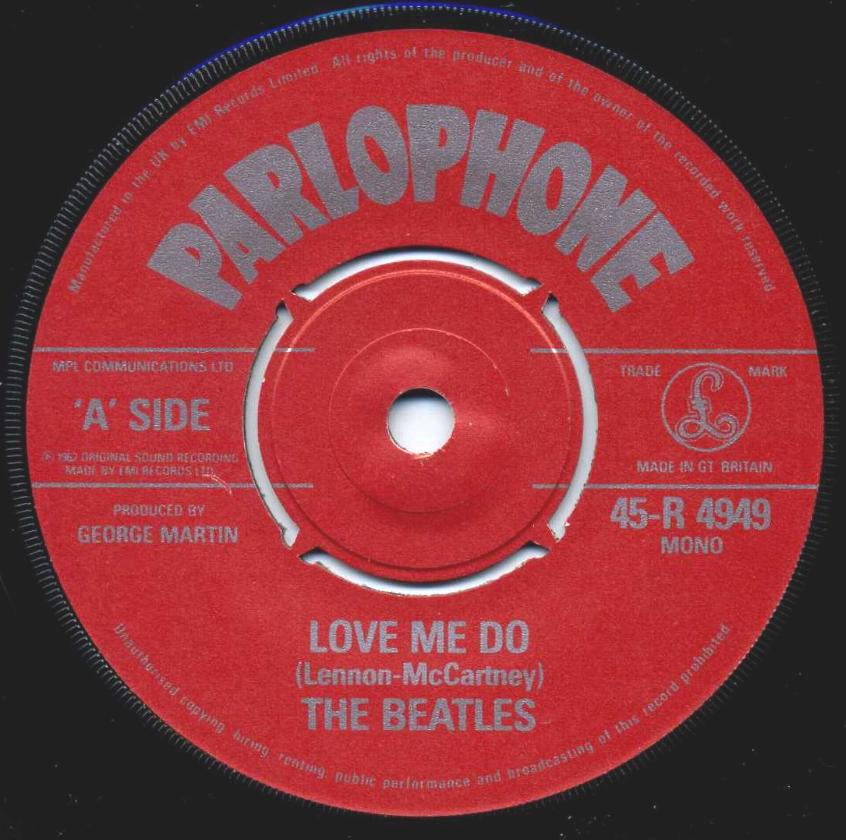
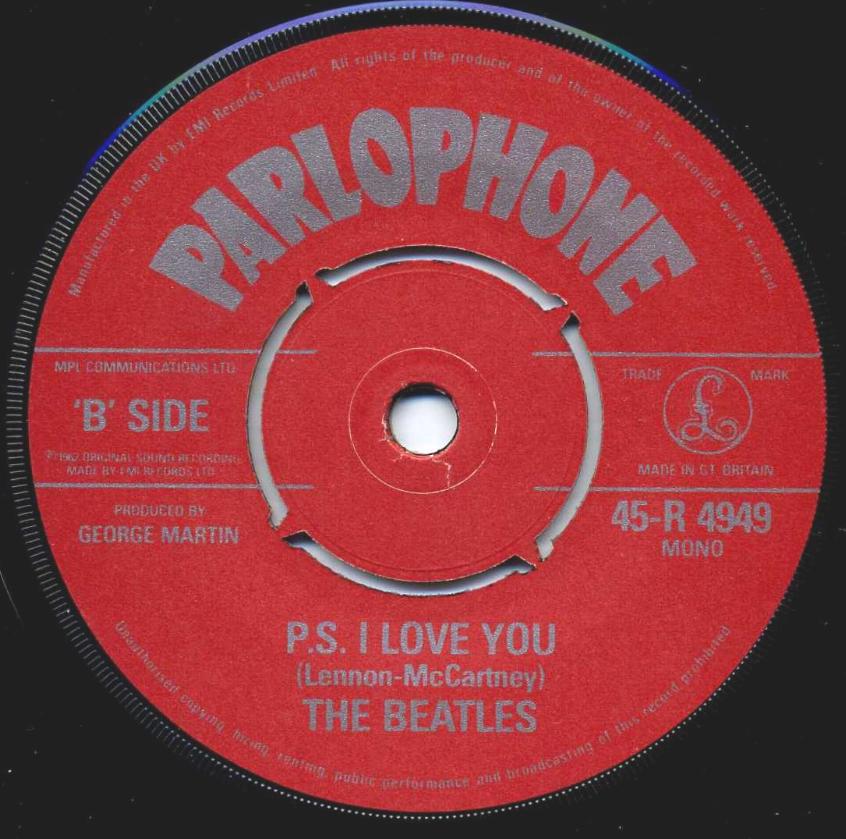
Swedish sleeve. In 1987, in Sweden, the 25th anniversary the single was re-released with a new alternative picture sleeve. Only 1,000 copies were made. On the front side was appeared the Beatles’ live photo from TV-programme “Drop In”, Stockholm 1963. Photographer: Michael Nordstrem. On the back side appeared review of Artillo Bergholtz. All sleeves have a unique number written by hand felt-tip pen on the back side. Set was distributed with the similar English 7″ single. Part of the edition was sold in the UK.
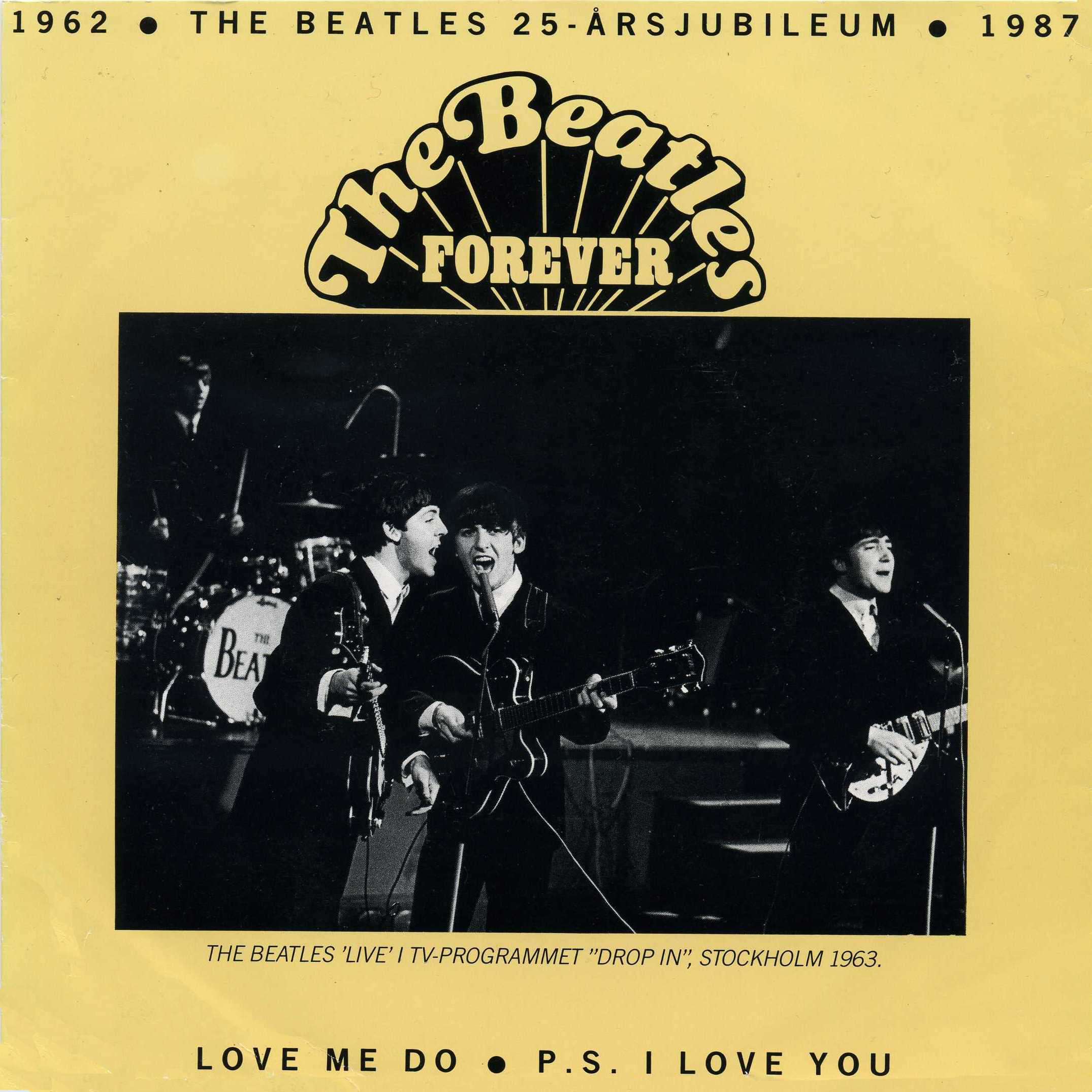
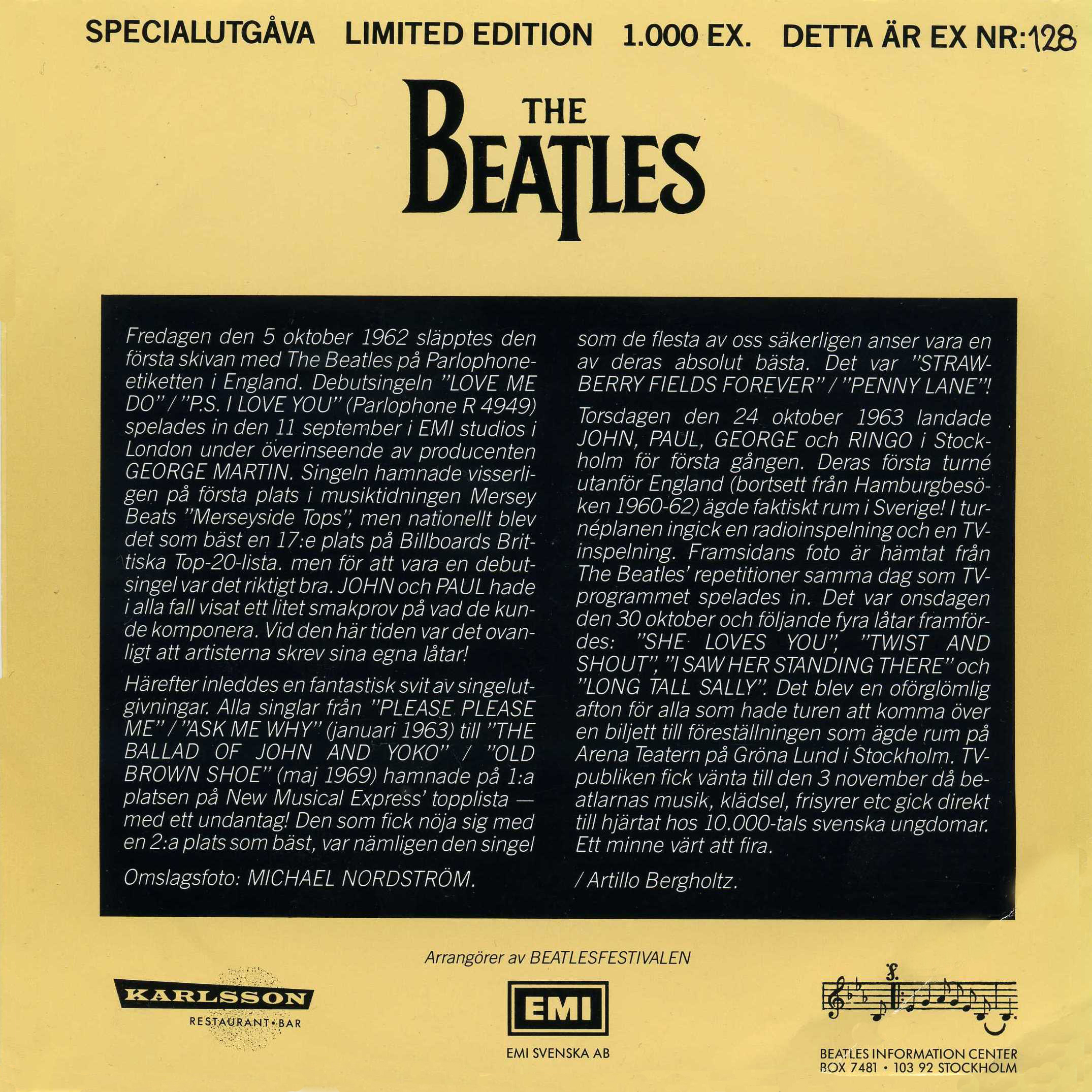
7. Seventh pressing beginning of the 90s. Same top-opening pictures sleeve as 6th pressing, but with bar code on the reverse.
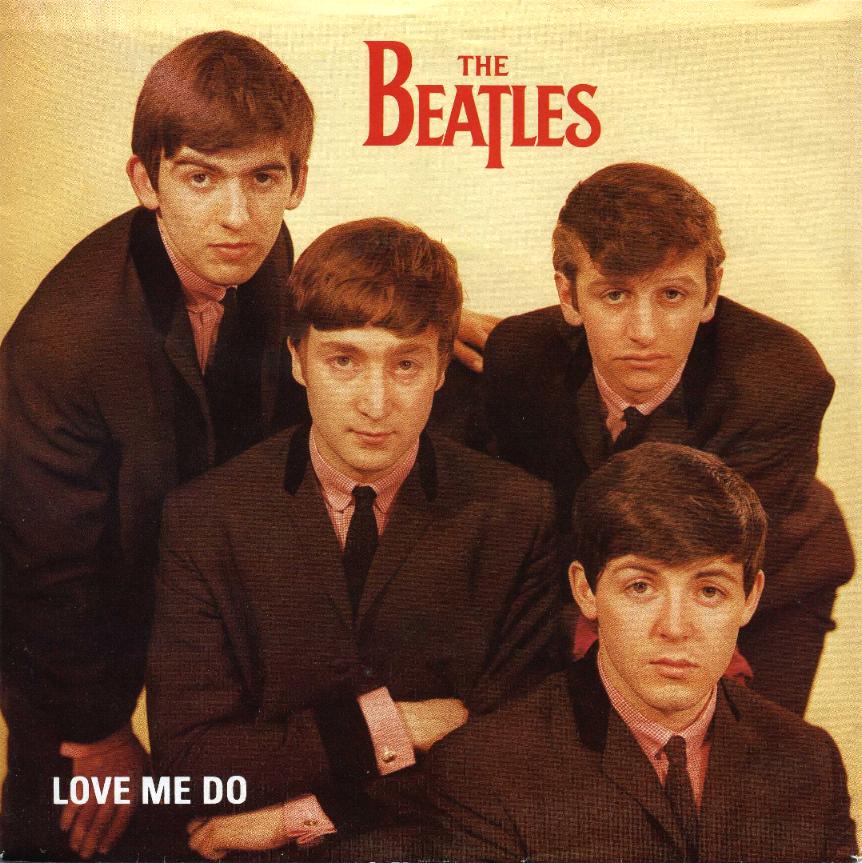
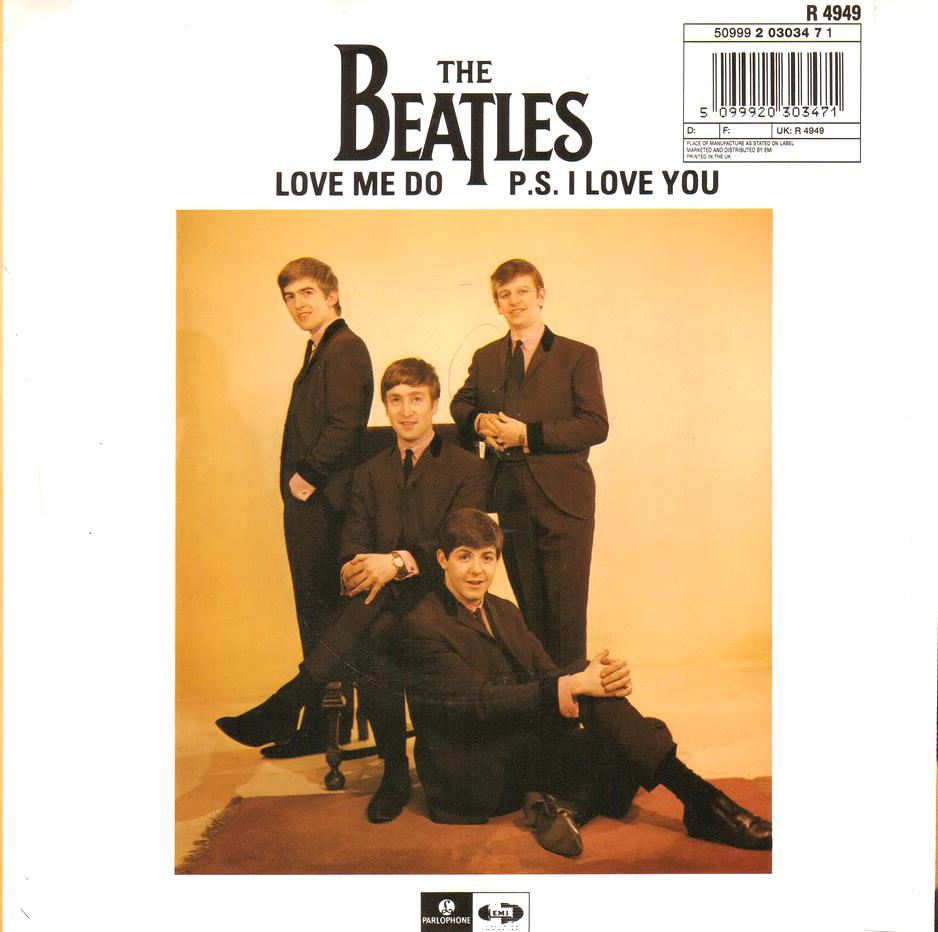
The final pressing has silver label with black textur print and logo. Rimtext embossed on the trail off area. The rimtext wording is: “UNAUTHORISED COPYING, HIRING, RENTING, PUBLIC PERFORMANCE AND BROADCASTING”. Matrix numbers: Side A: 7XCE 17144-2-1-Q1, Side B: 7XCE 17145-2-1-Q1. Late pressing: 7XCE 17144-5-1-Q2 / 7XCE 17145-3-1-Q2.
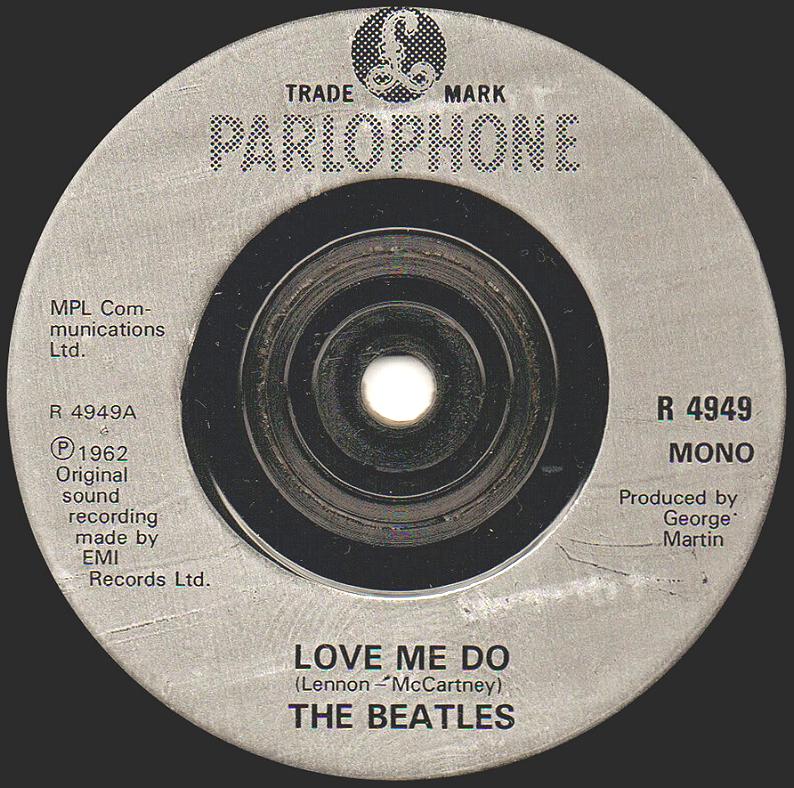
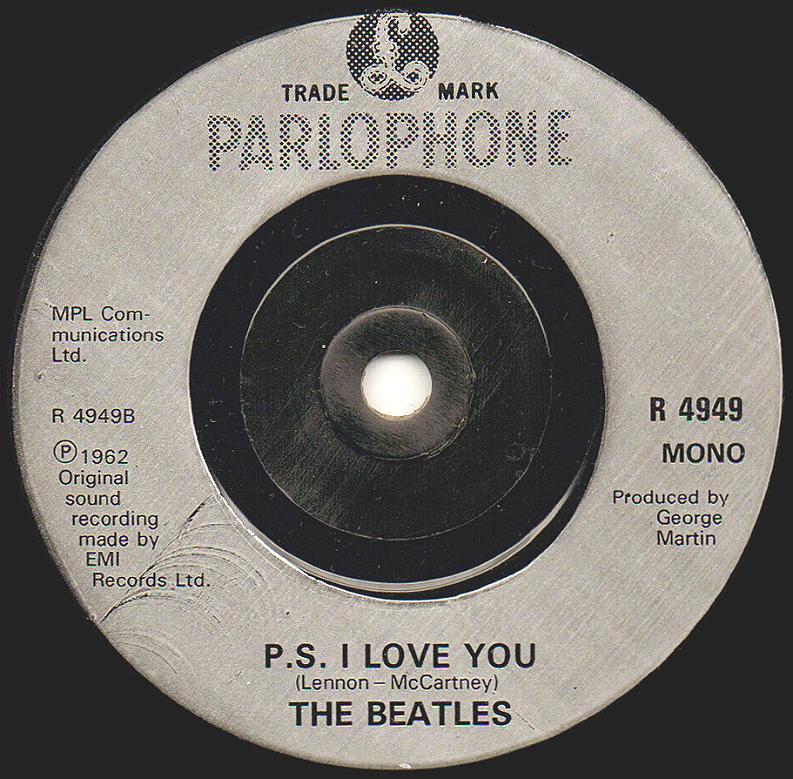
8. Eighth pressing October 5, 2012. Parlophone R4949/R4714 (5099901740172). Issue and released as a limited edition to mark the 50th Anniversary of the original release on 5 October 1962. This is a replica of the original single in the original colourful “beach towel” Parlophone company sleeve. The audio is taken from the mono remaster of 2009. This is a replica of the original single in the original colourful “beach towel” Parlophone company sleeve. The sleeve is made of a cardboard and has a bar code in difference from the paper original.
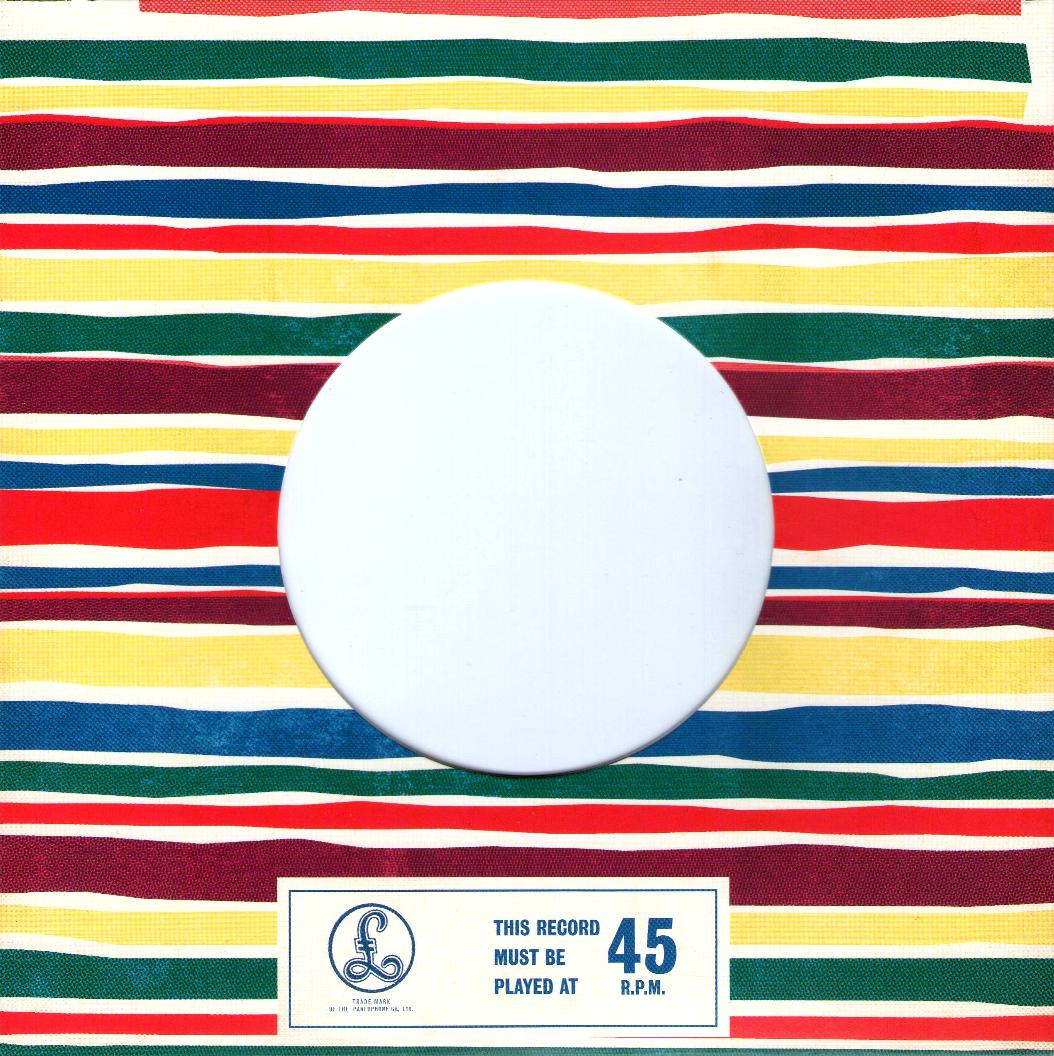
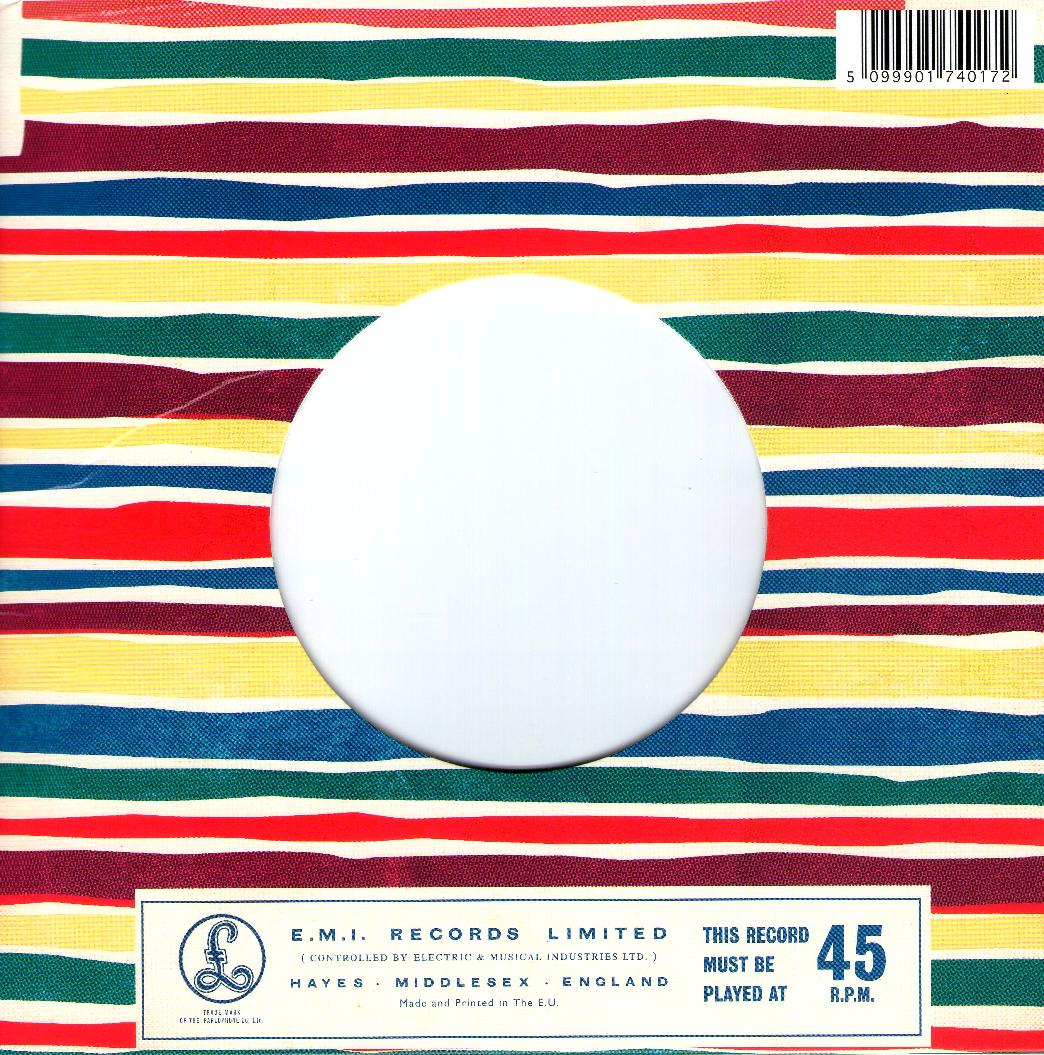
Variation A. Andy White mispressing, October 5, 2012. Issued to record dealers in the week commencing 1st October for official release on 5th October, the single was then recalled by EMI when it was discovered they had mistakenly used the version of Love Me Do that features Andy White on drums, and had erroneously used catalogue number R 4714 on the B Side (R 4714 belongs to a 1960 Matt Monro release). EMI apparently announced that it was under strict instructions from The Beatles’ Apple label to destroy copies of the single.
Matrix numbers (hand etched): Side A: BC88258-01A1 0174017, Side B: BC88258-01B1 0174017.
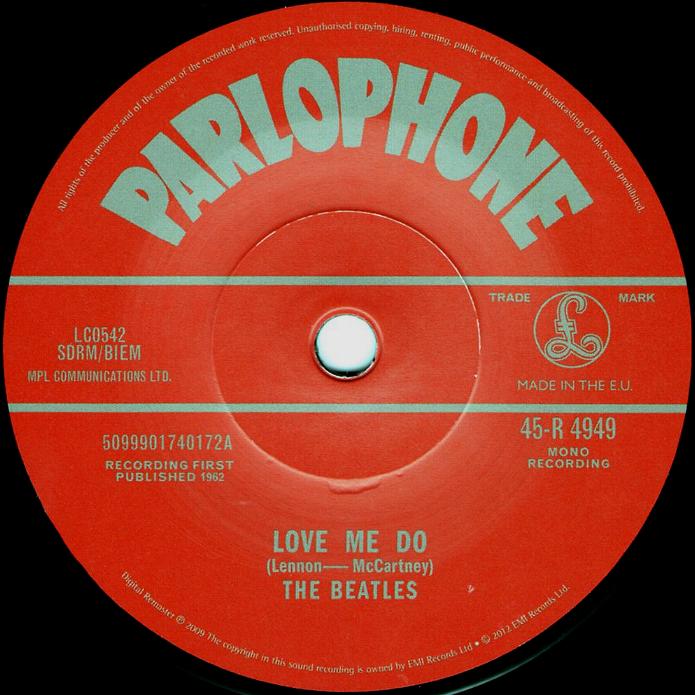
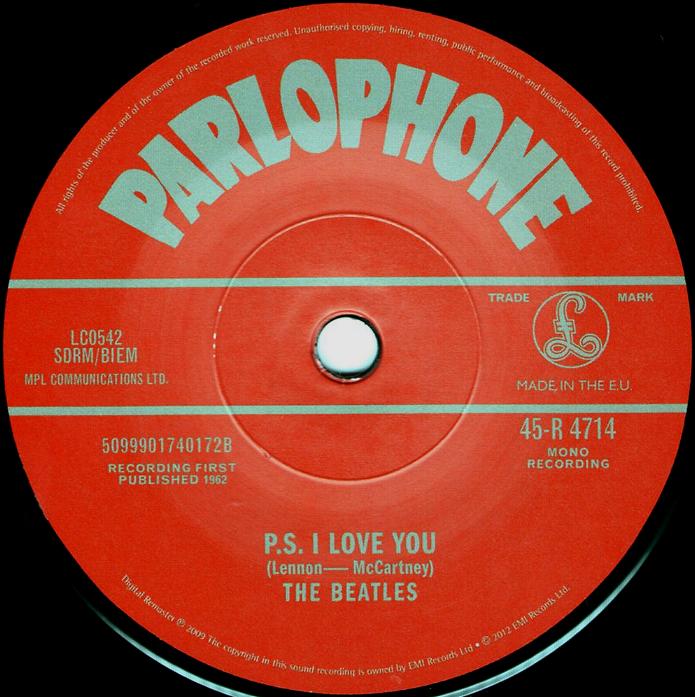
Variation B. Ringo pressing, October 22, 2012. EMI reissued the single on 22nd October with the version of Love Me Do that features Ringo on drums, although the B Side still carries the wrong catalogue number R 4714. Not clearly why so it turned out after all labels obviously were reprinted. This release has shinier/glossier silver print on the label which is much clearer.
Matrix numbers (hand etched): Side A: BC91232-01A1 0174017, Side B: BC88258-01B1 0174017.
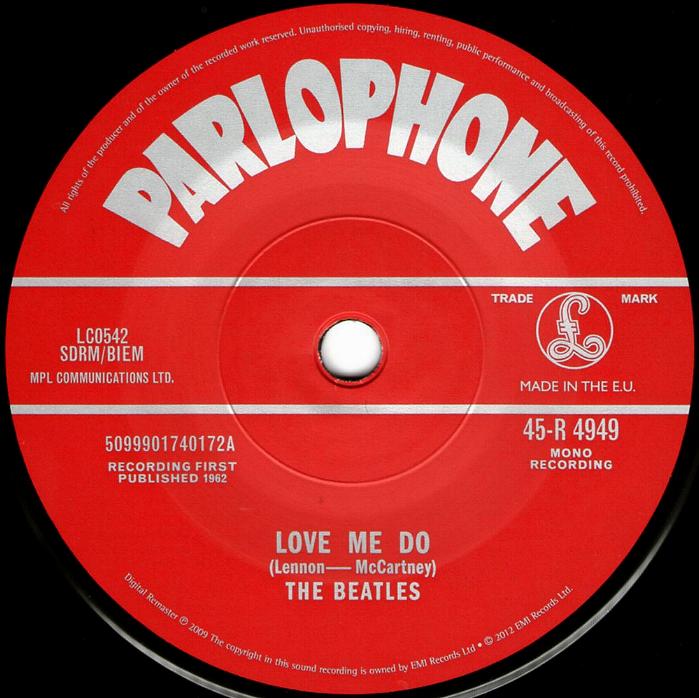
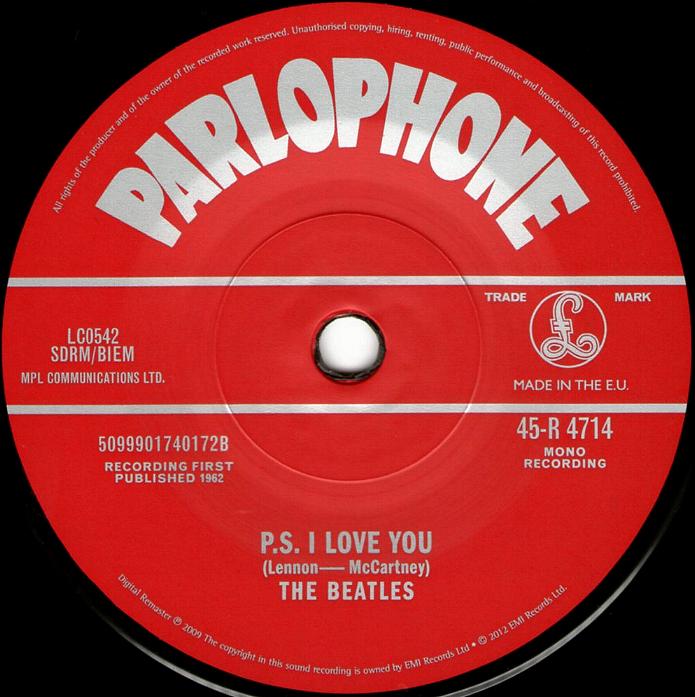

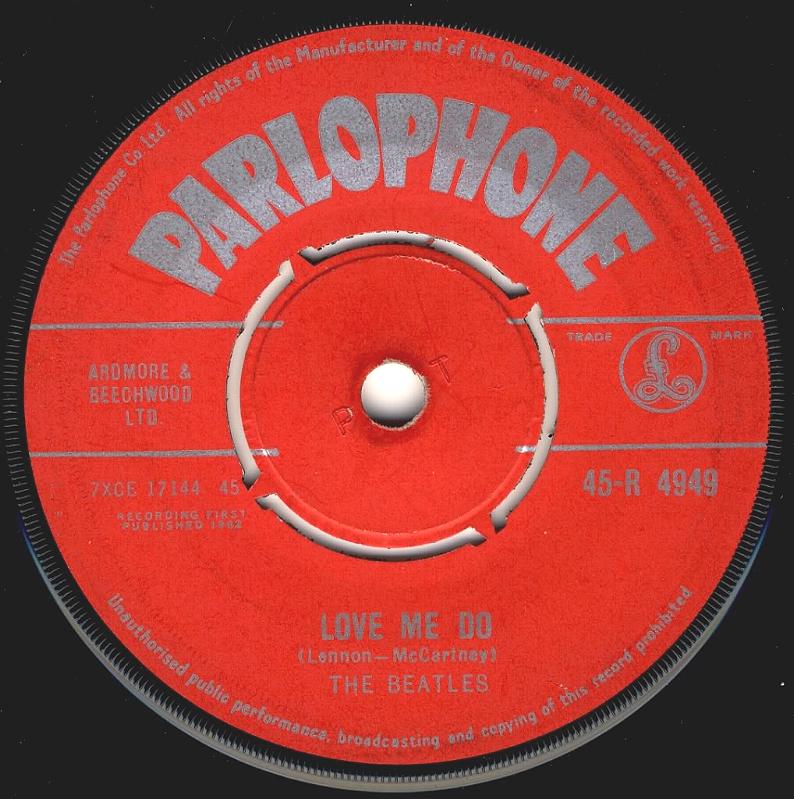
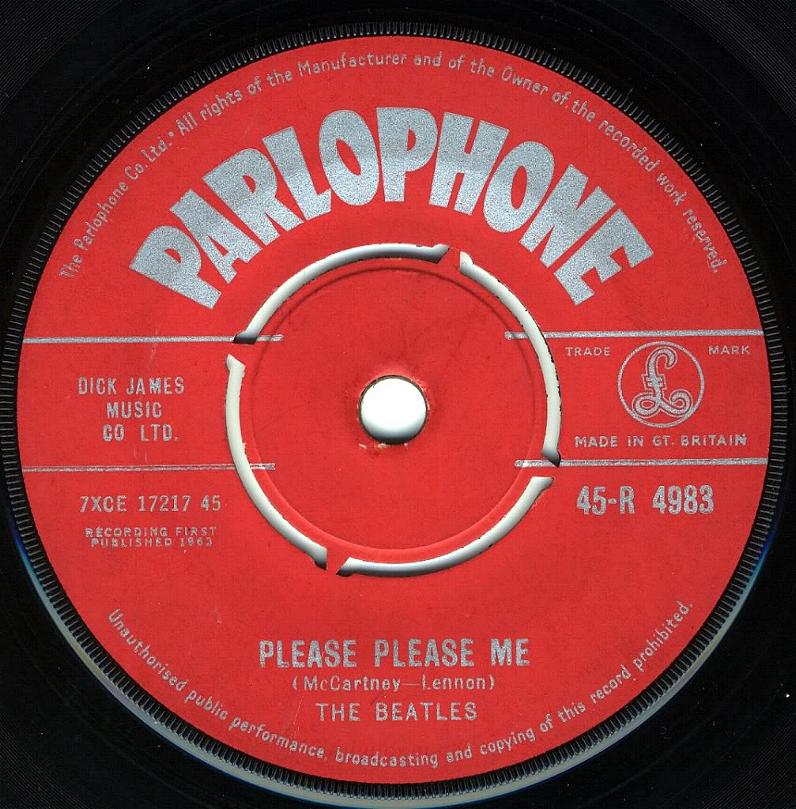
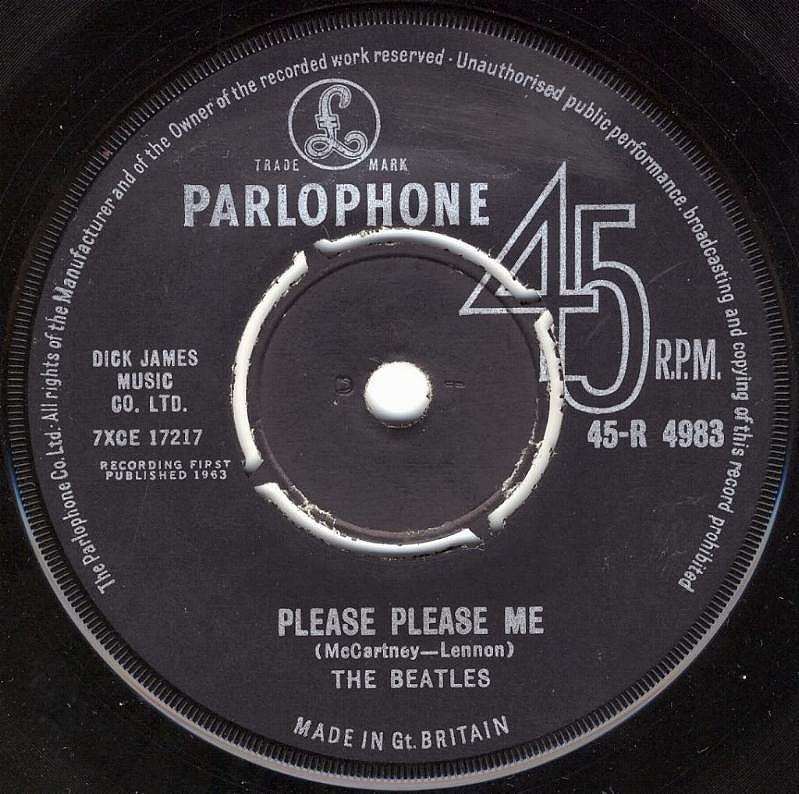
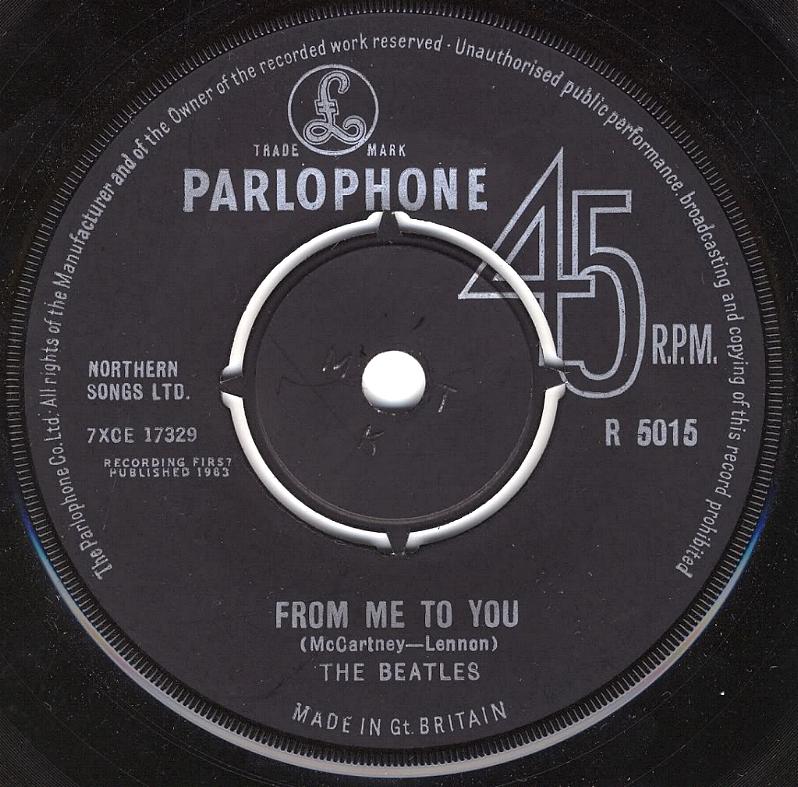
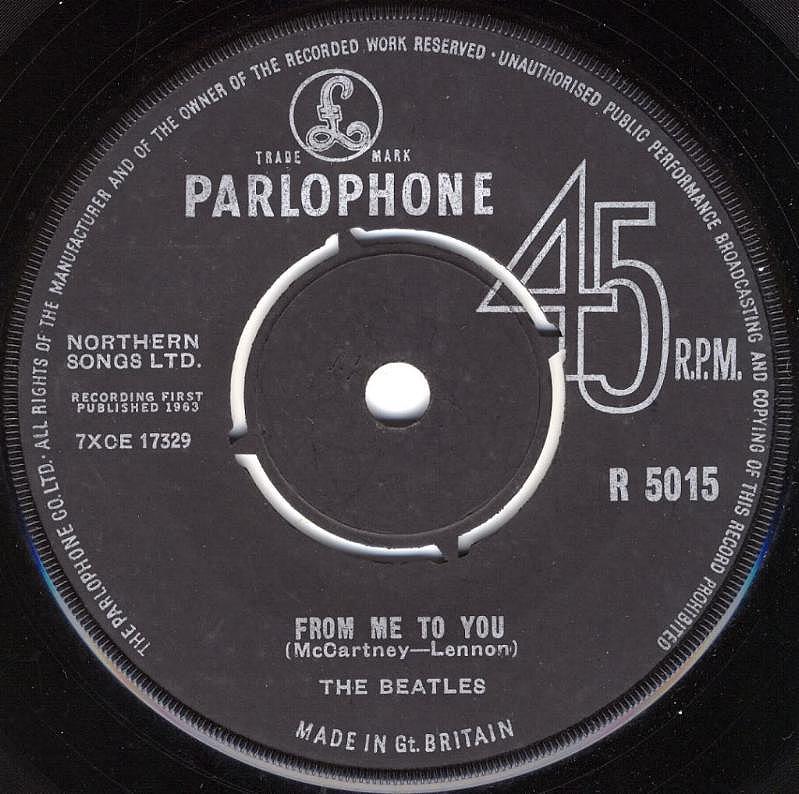
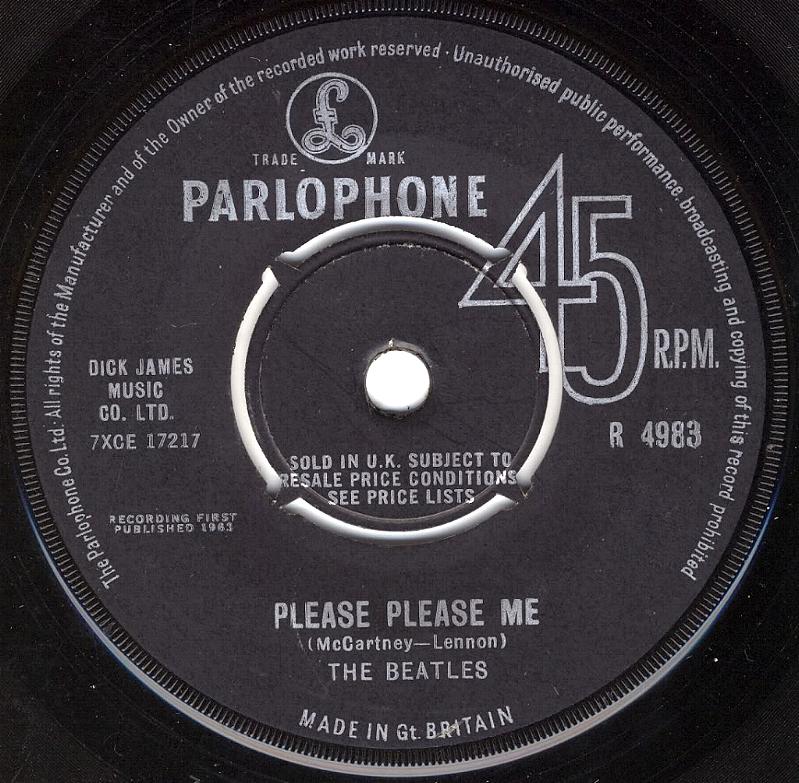
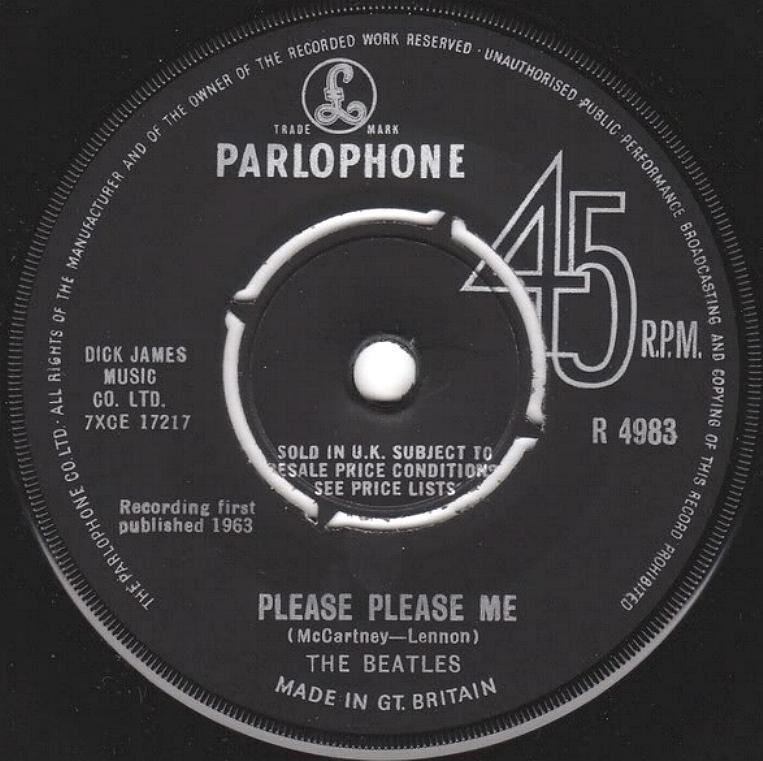
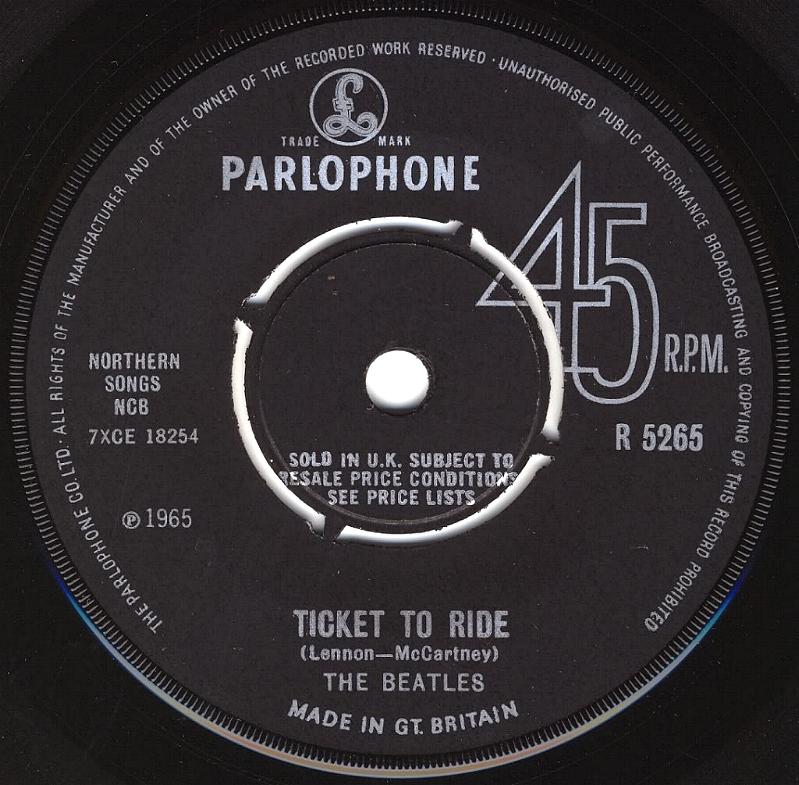
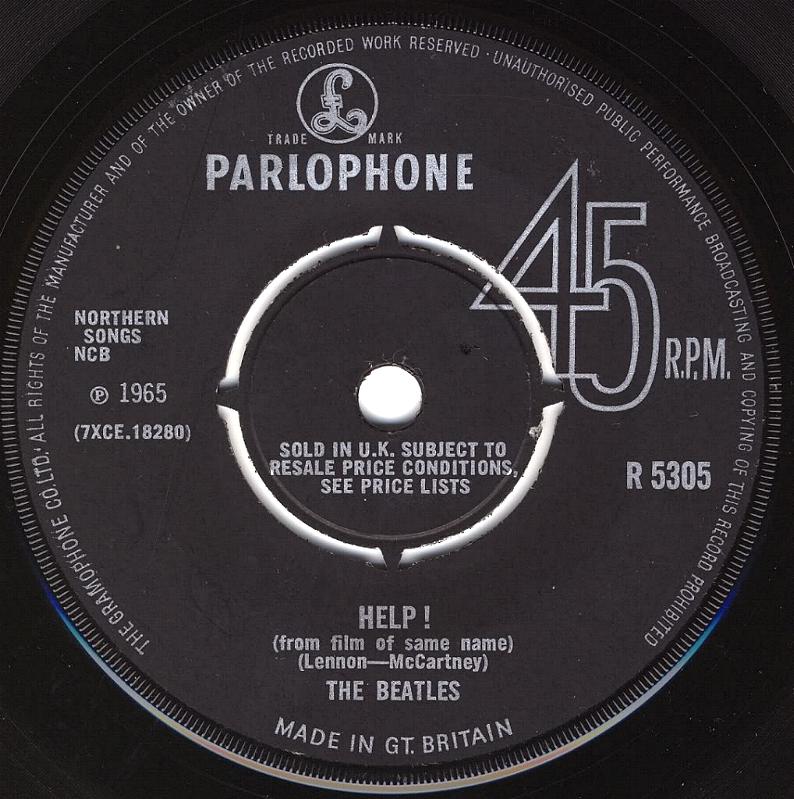
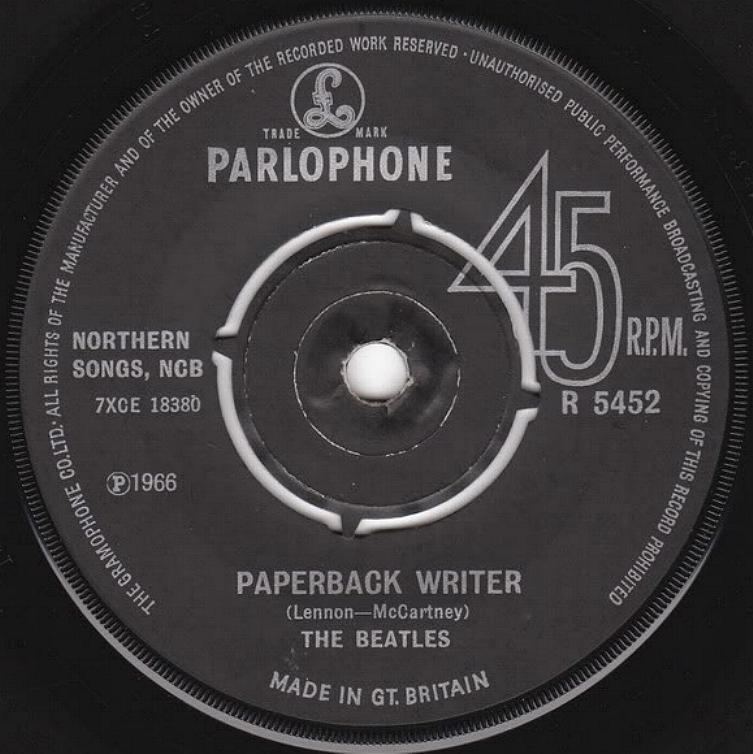
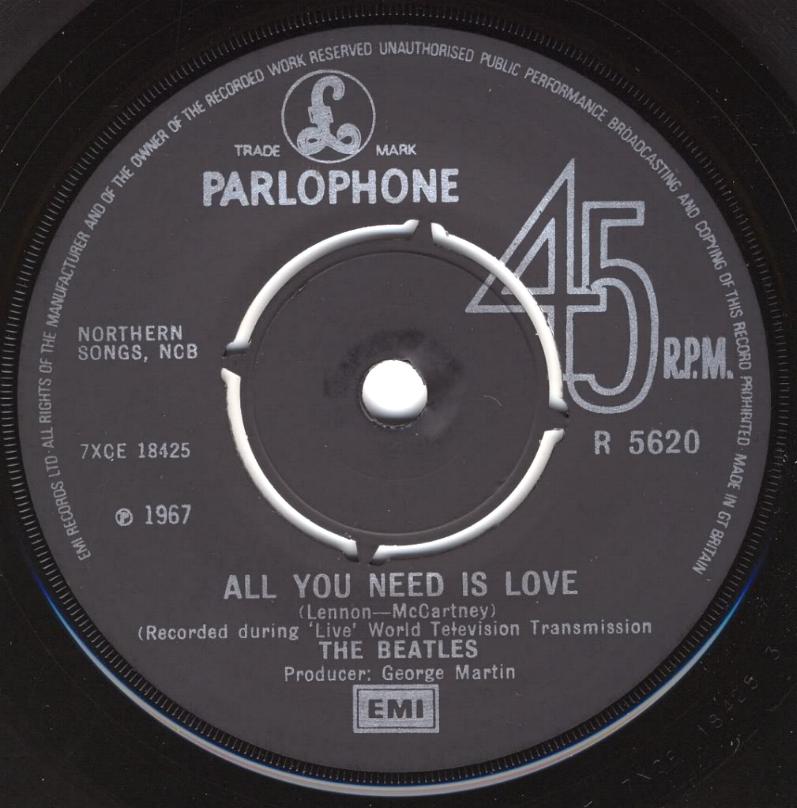
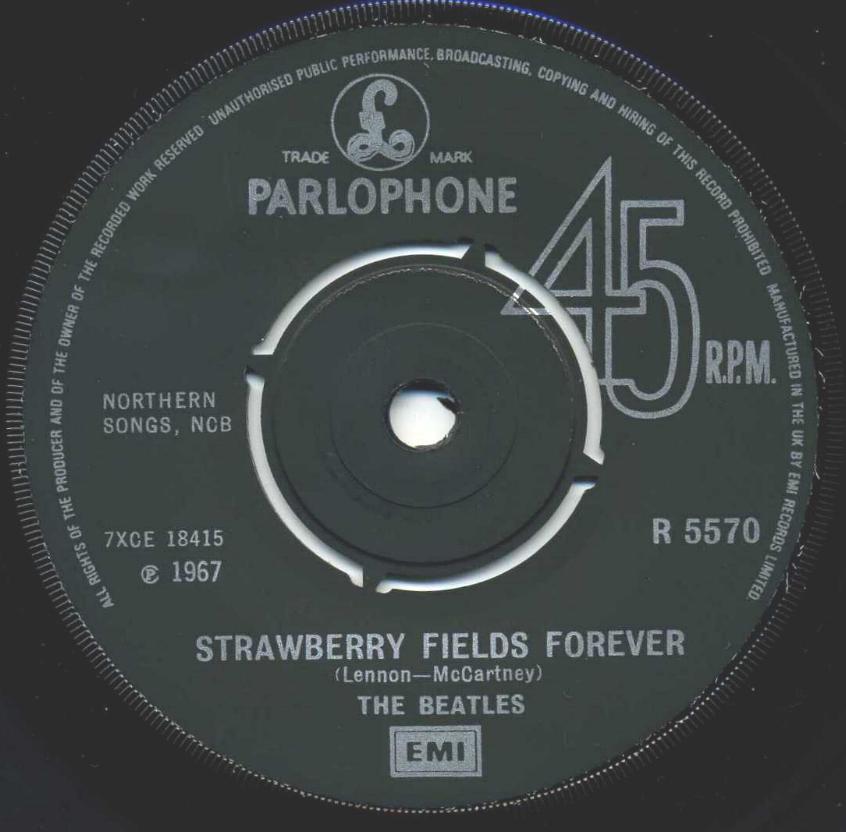
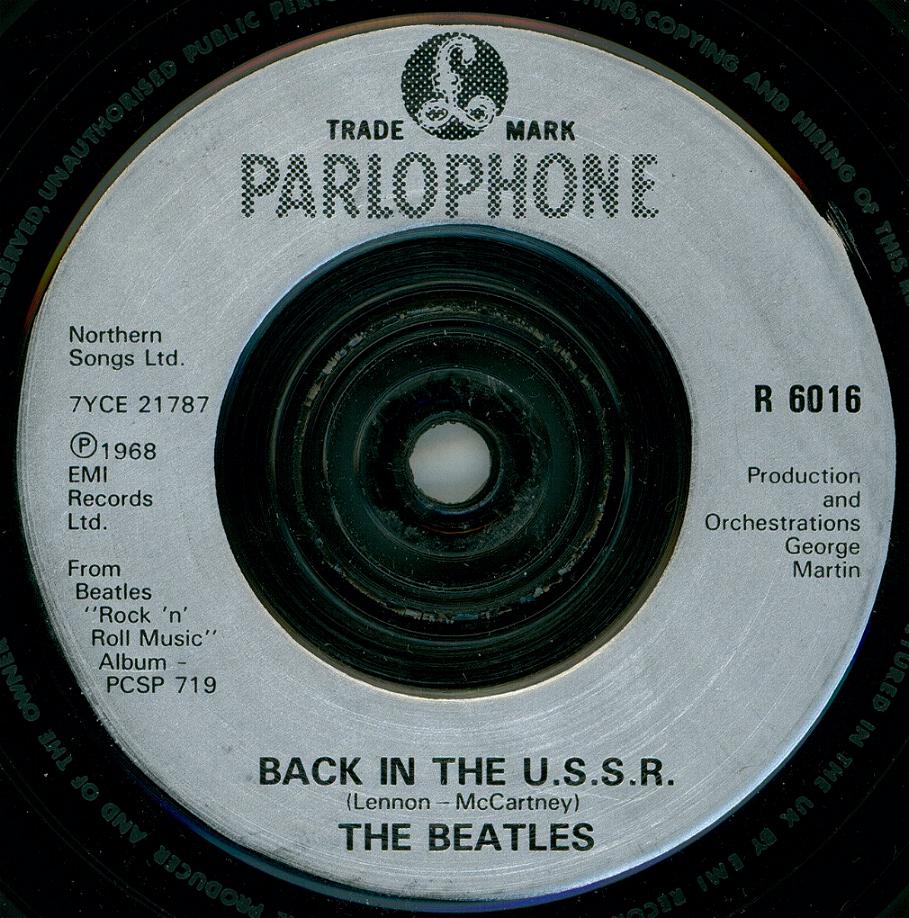
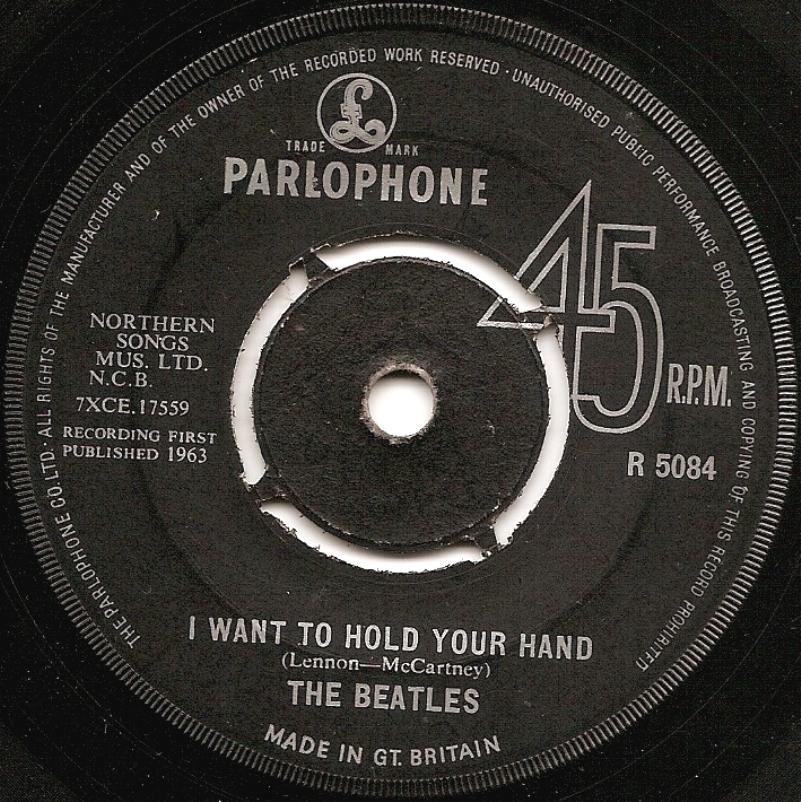
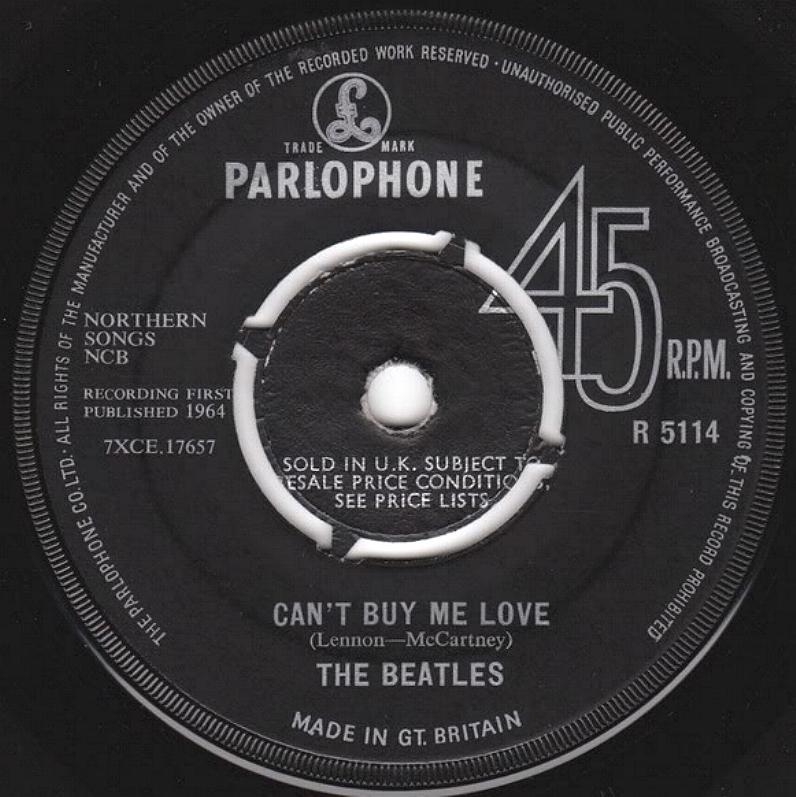
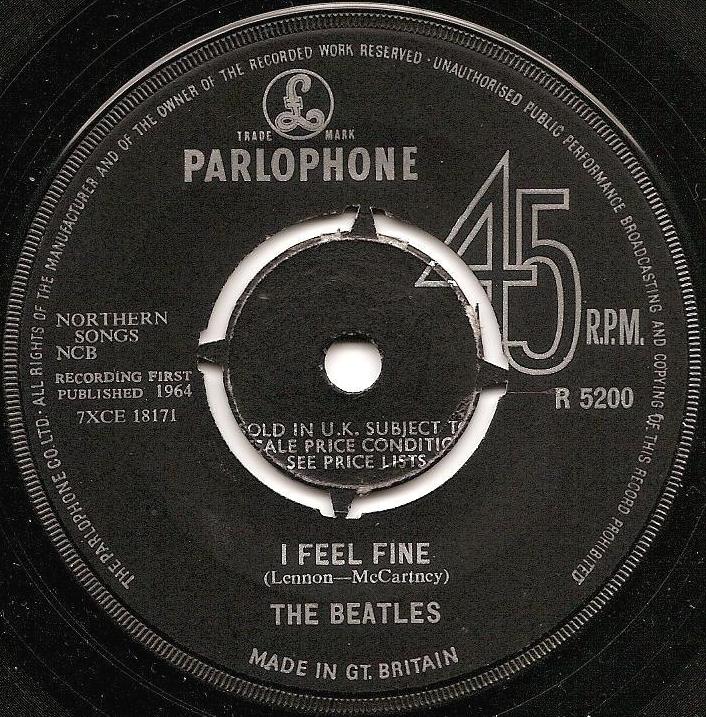
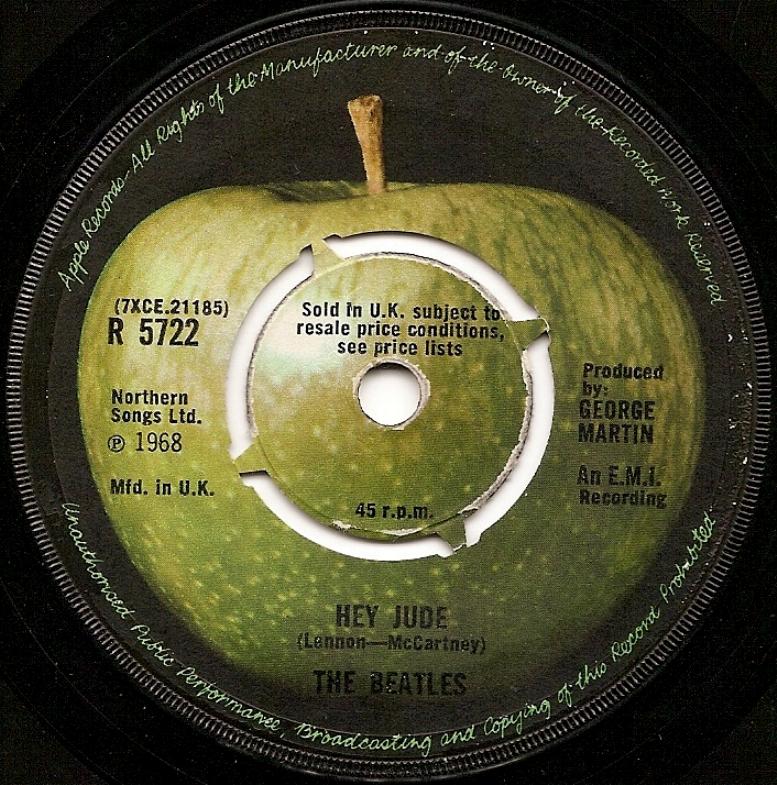
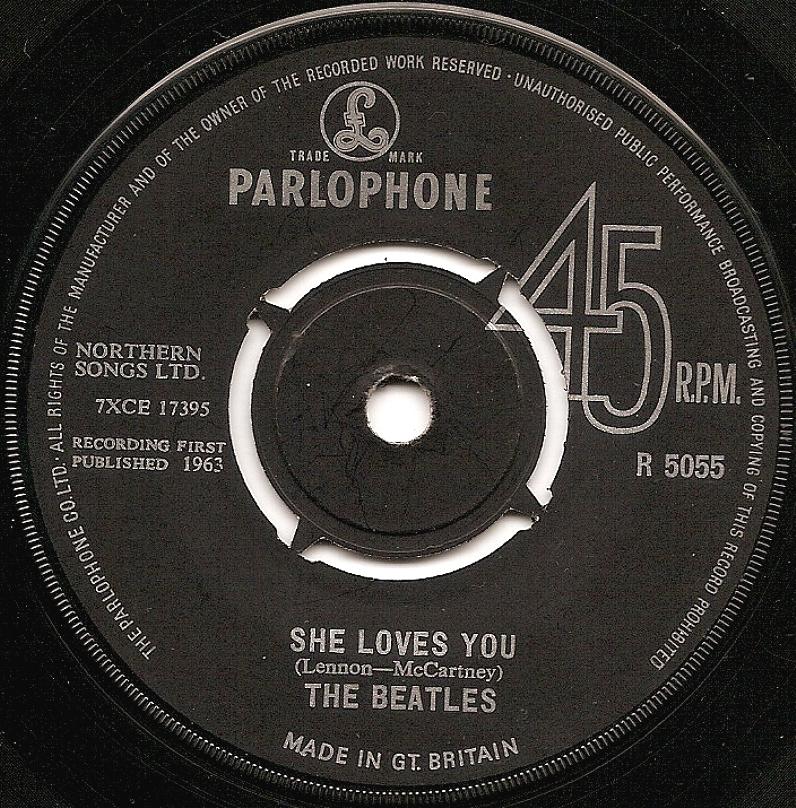
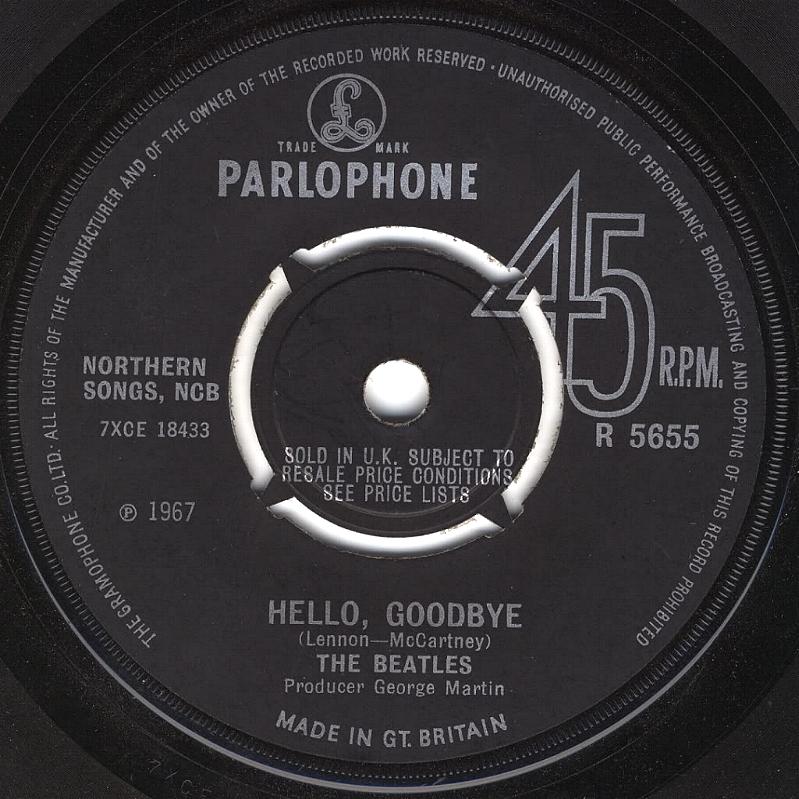
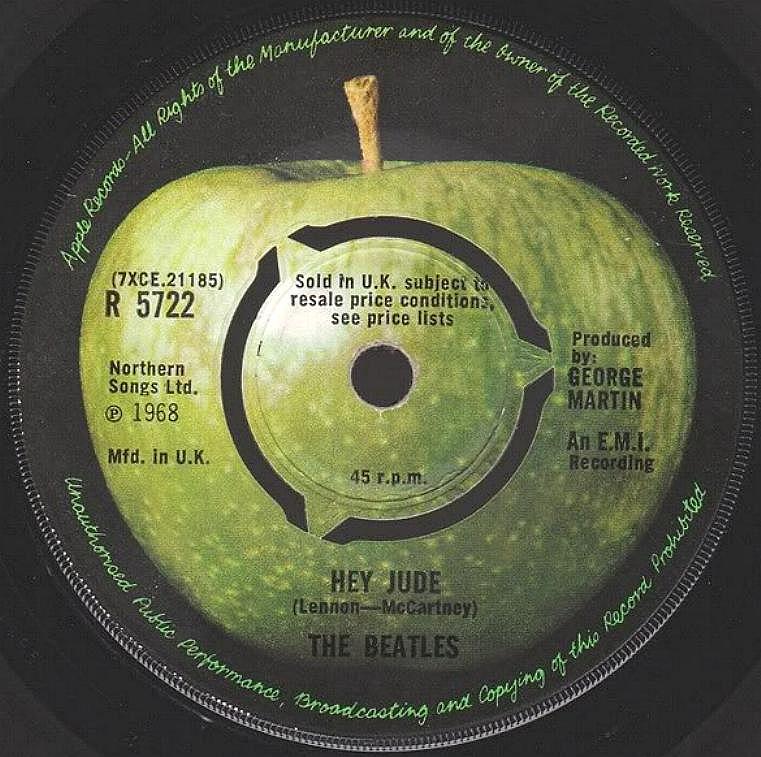
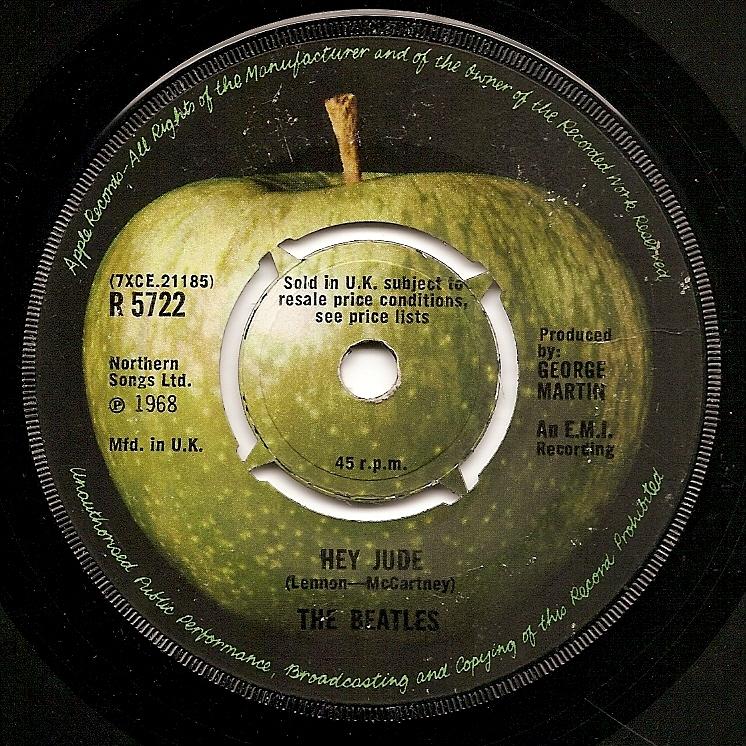
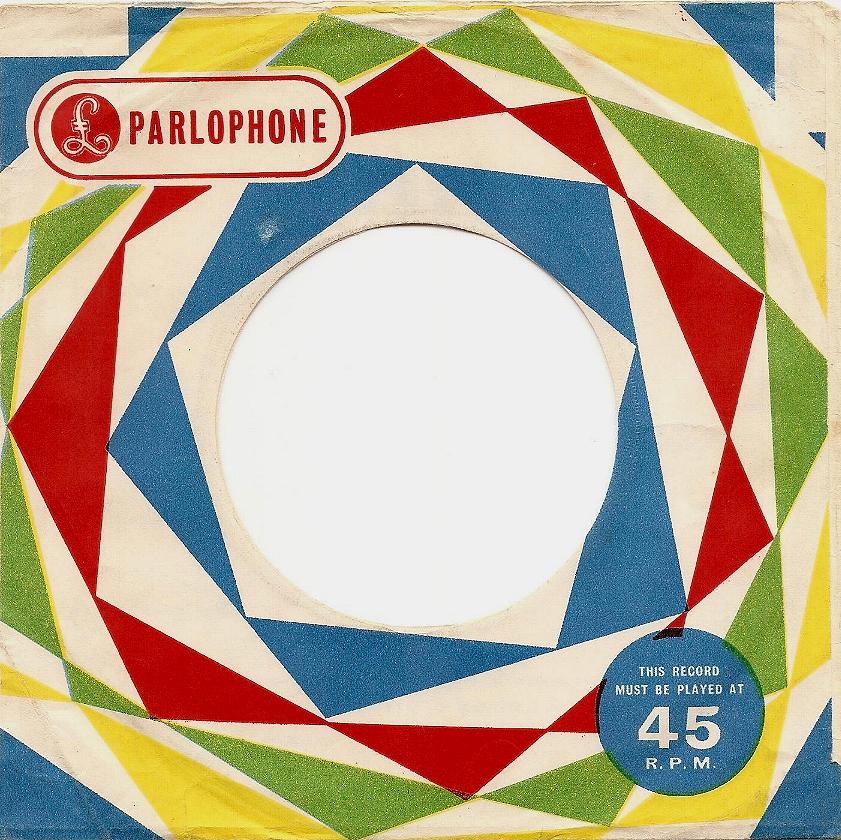
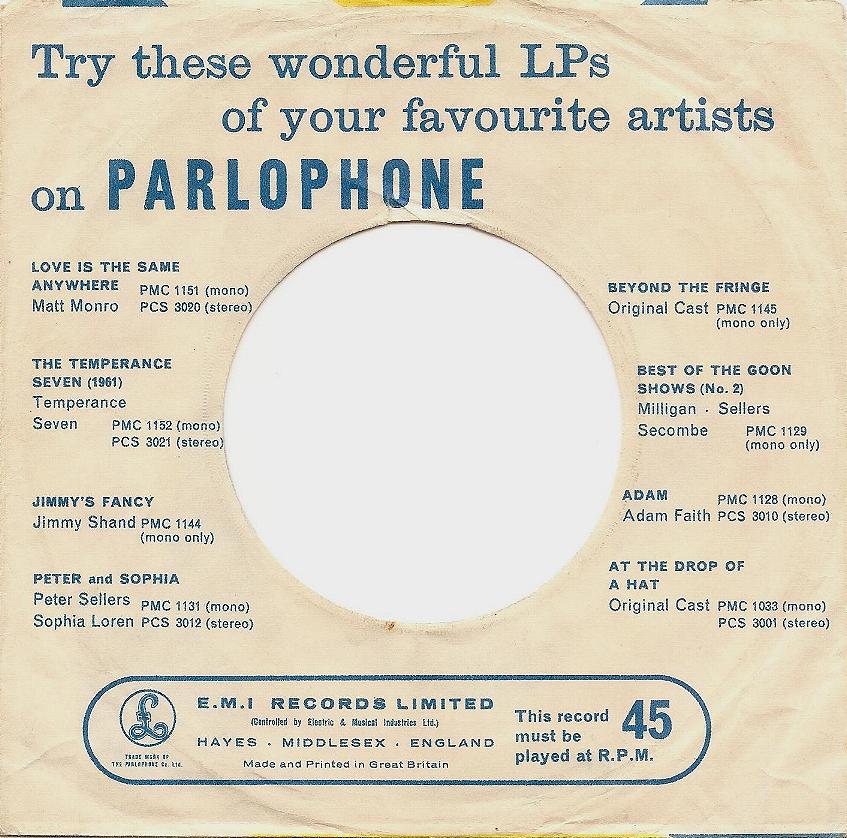
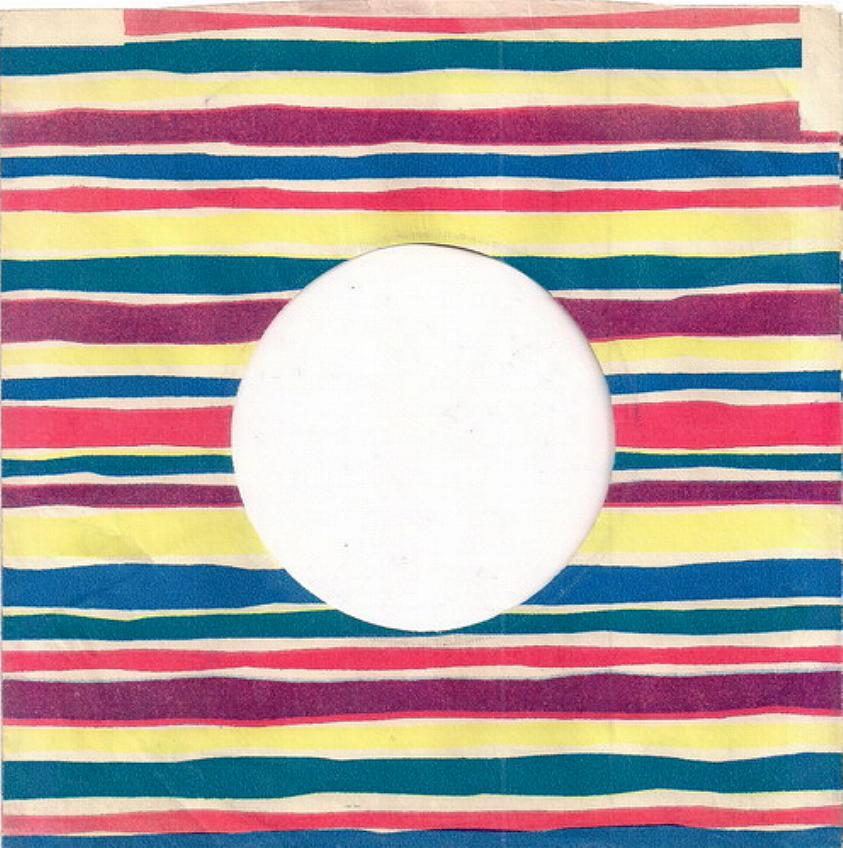
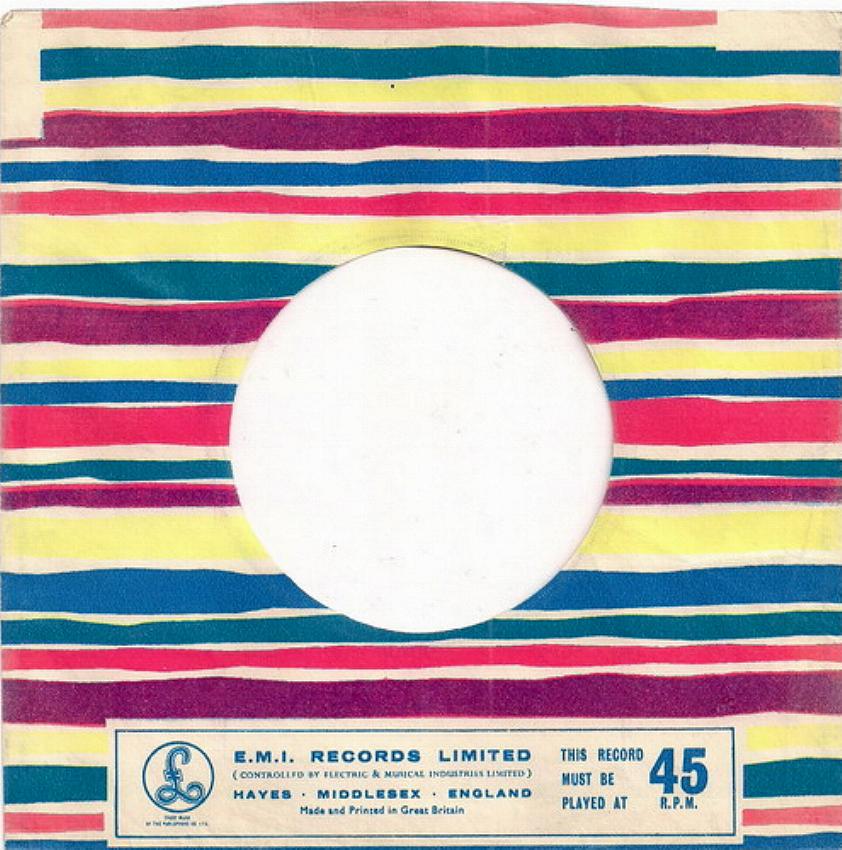
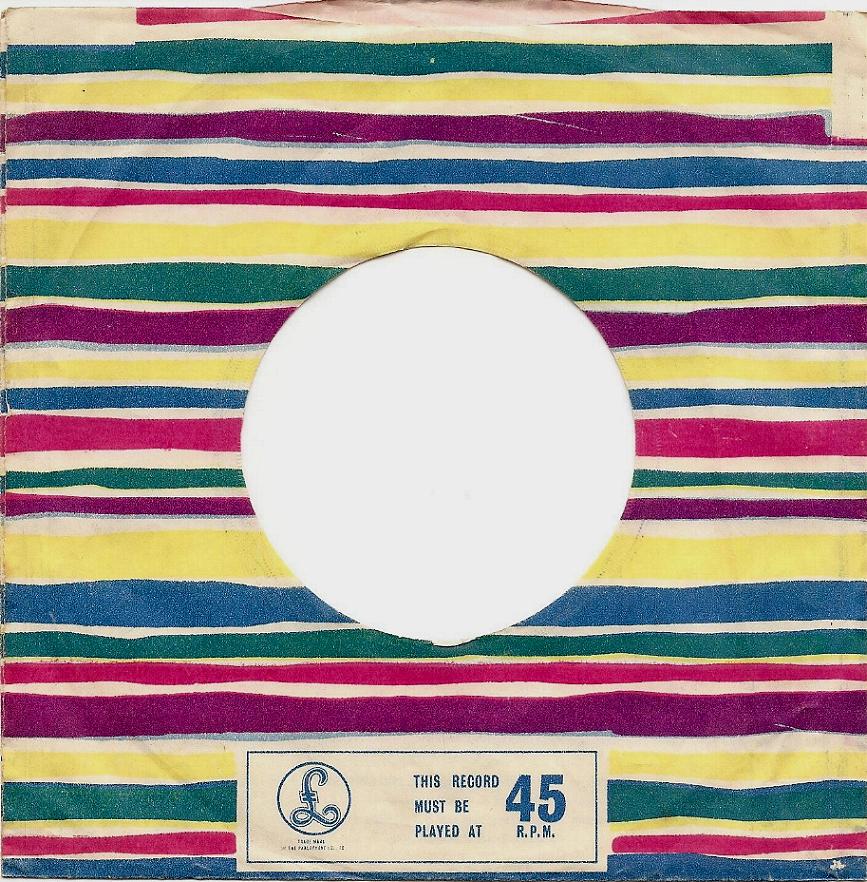
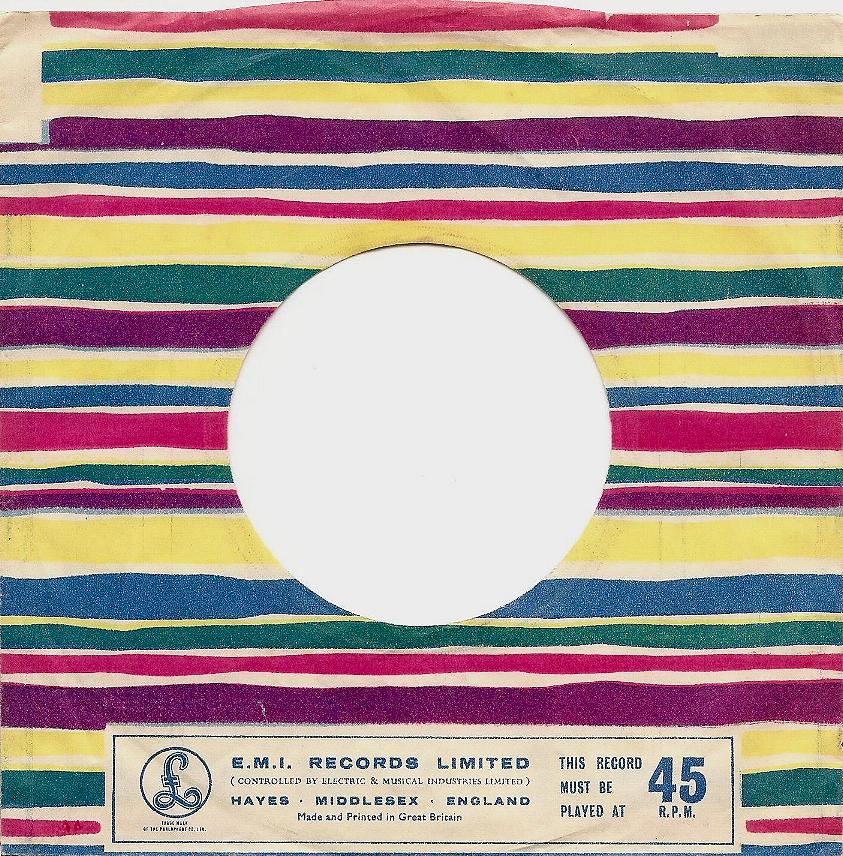
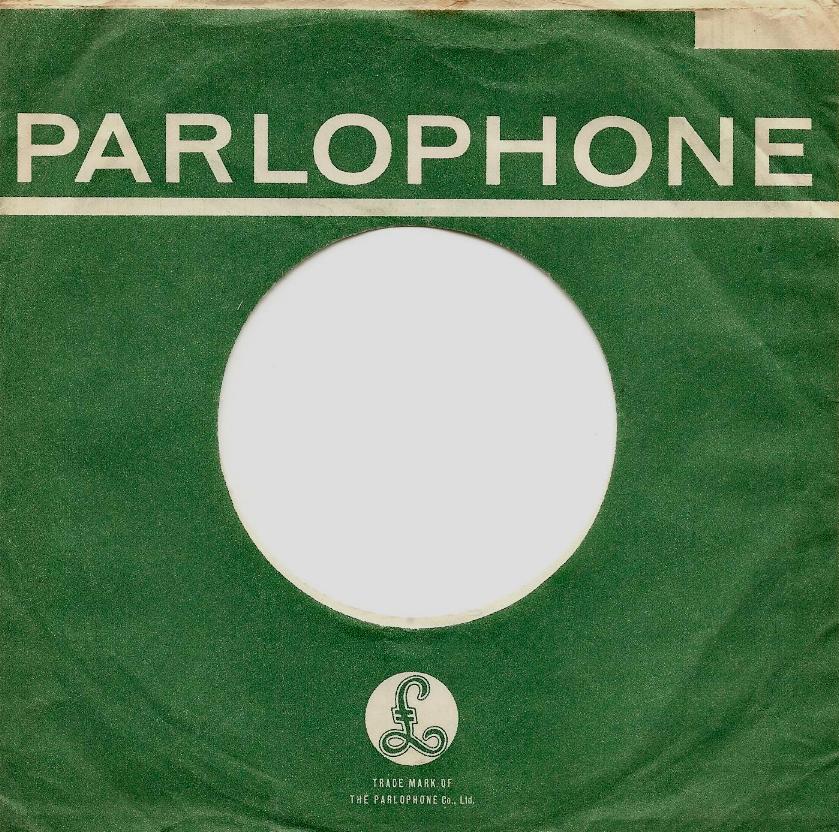
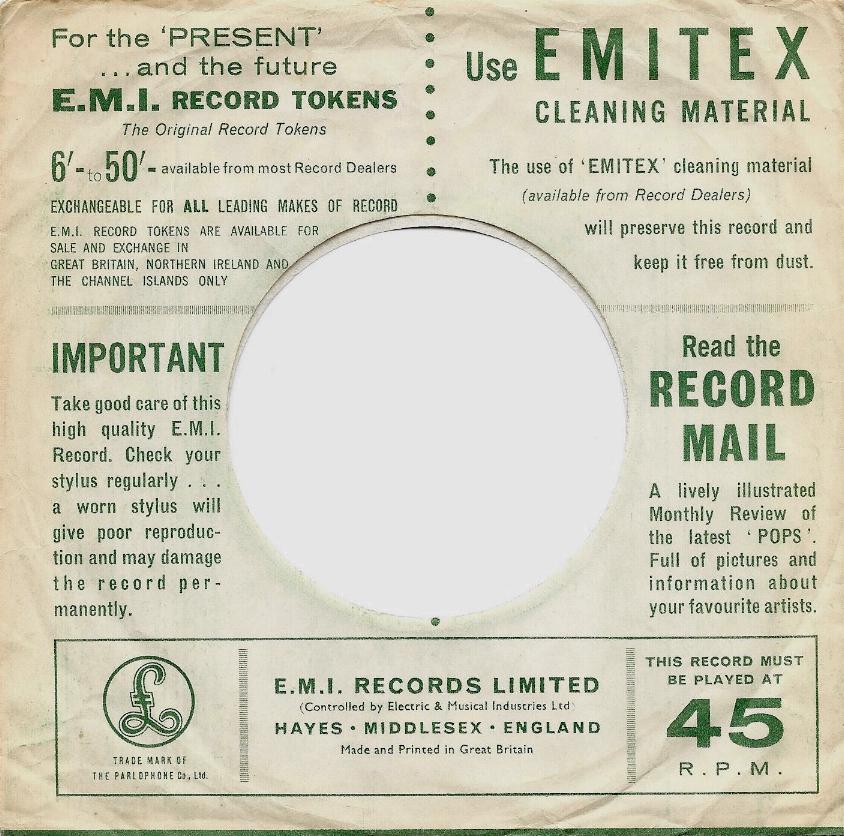
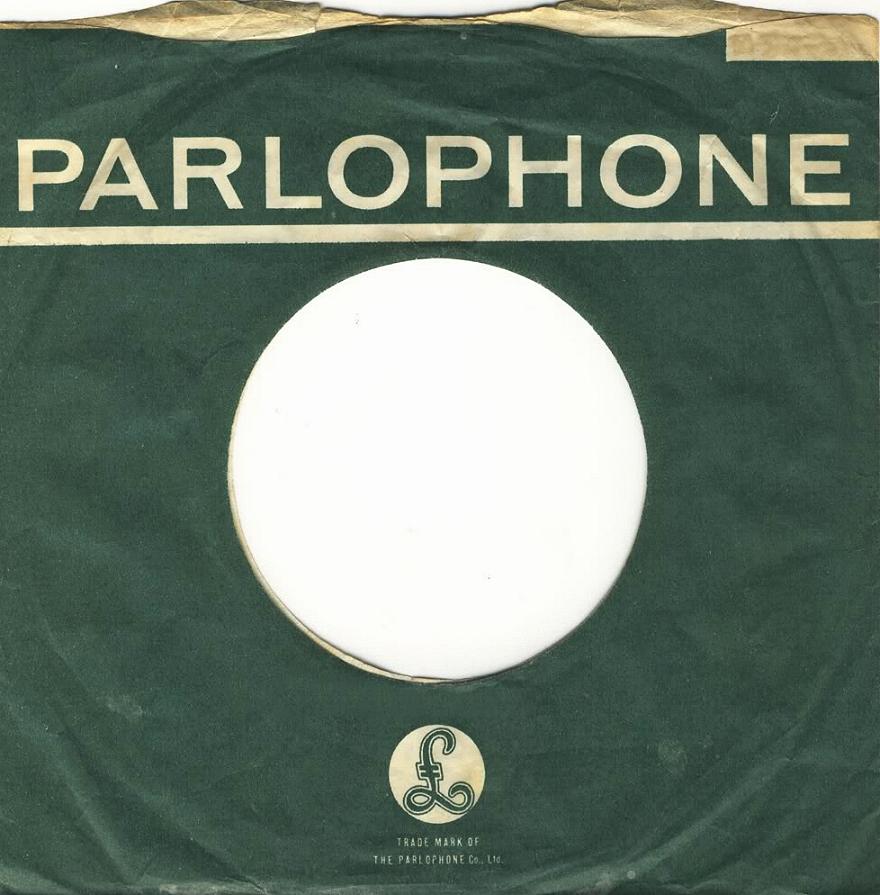
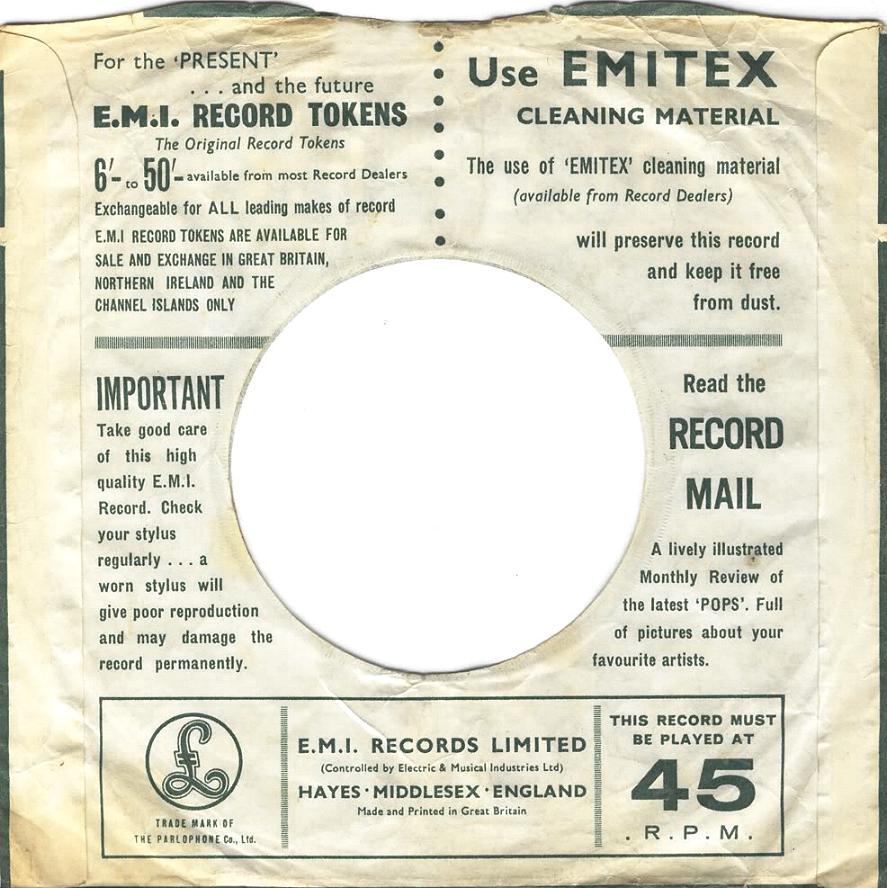
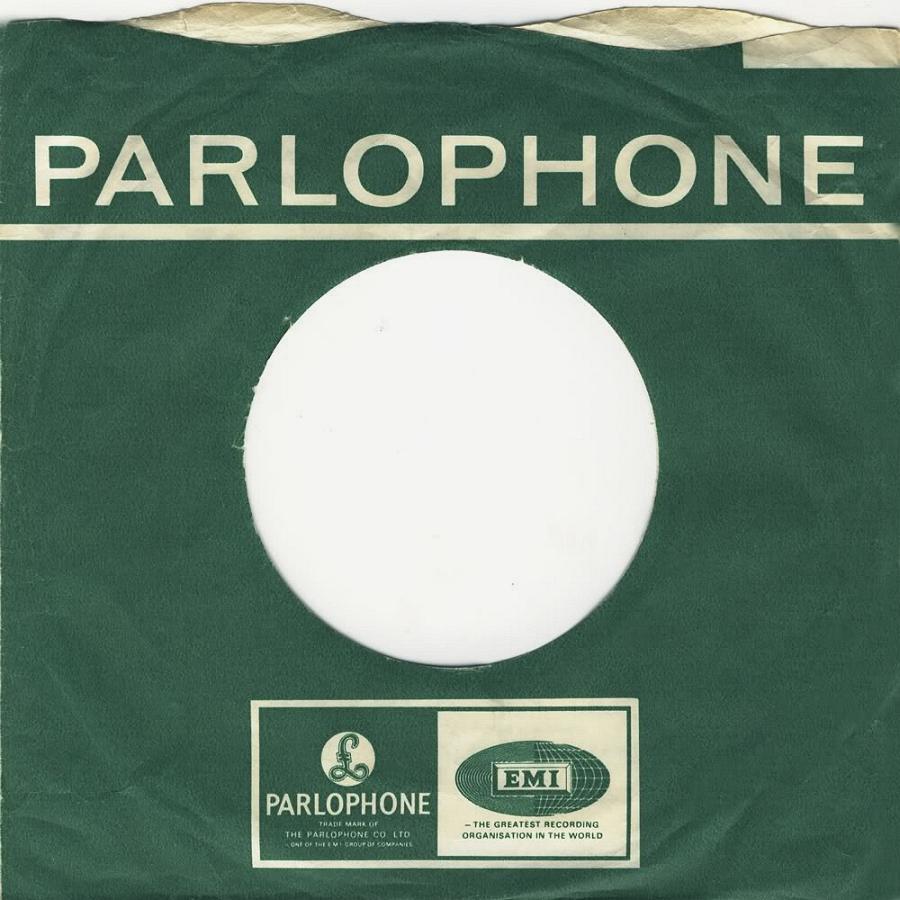
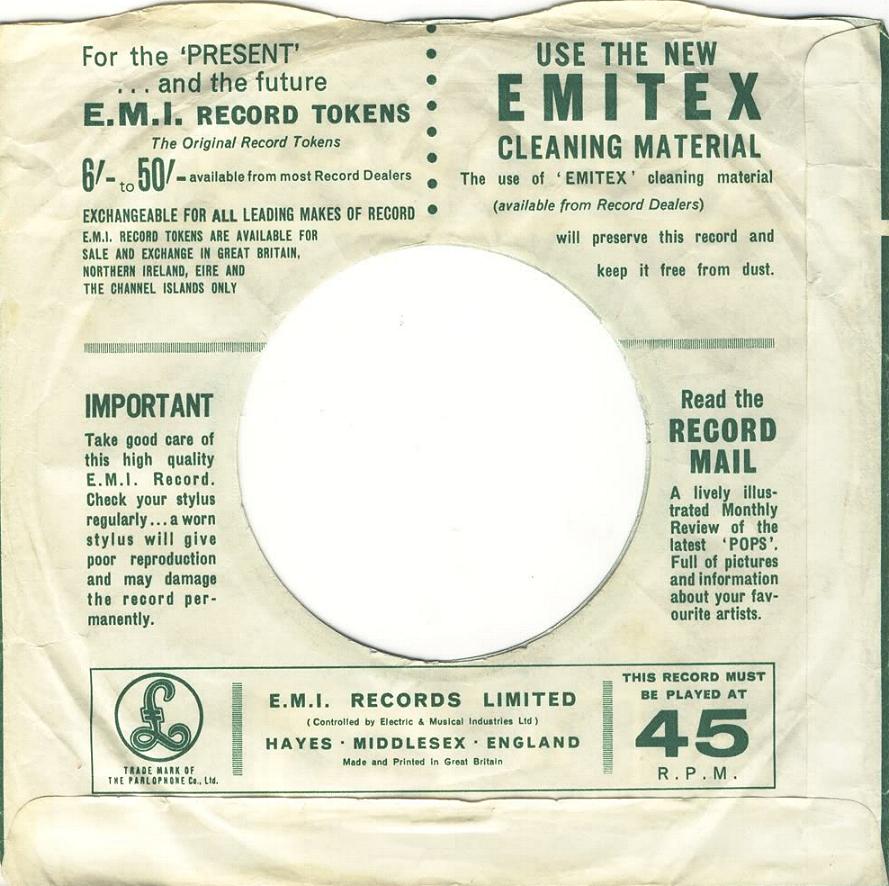
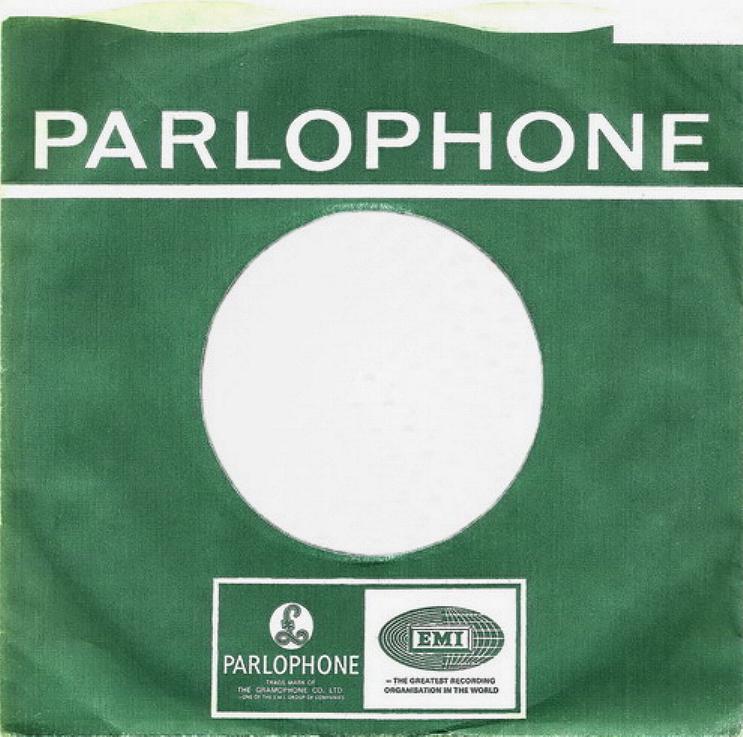
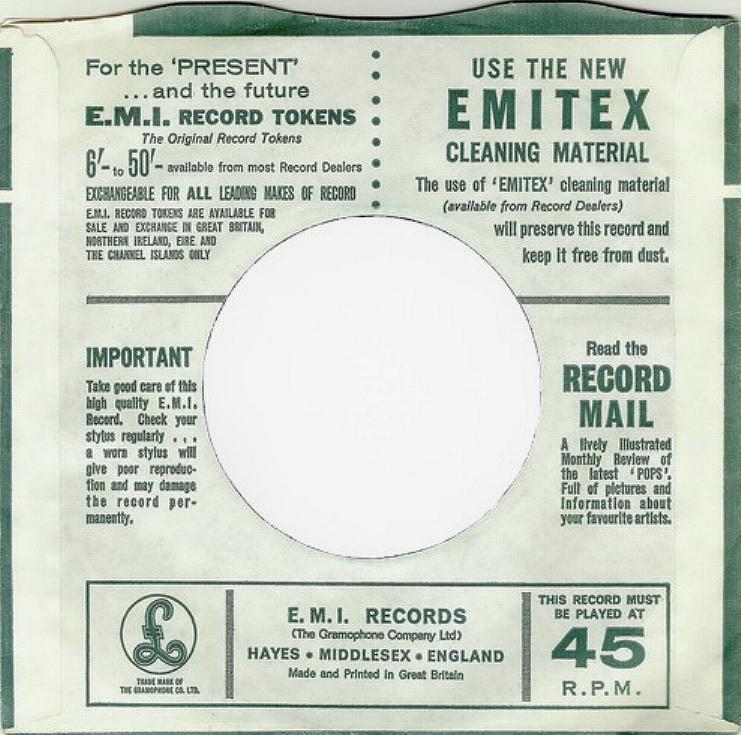
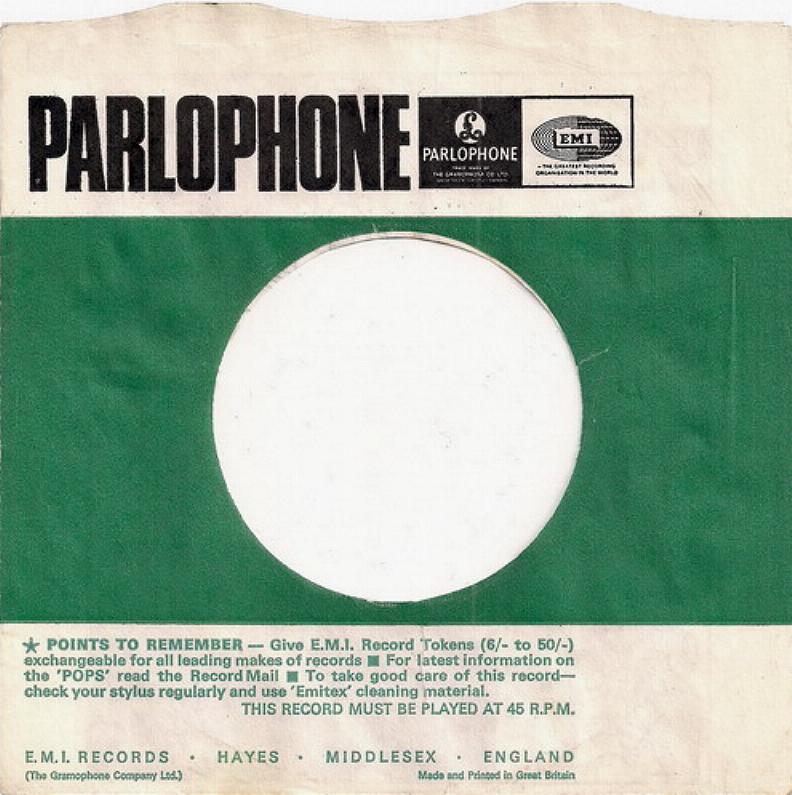
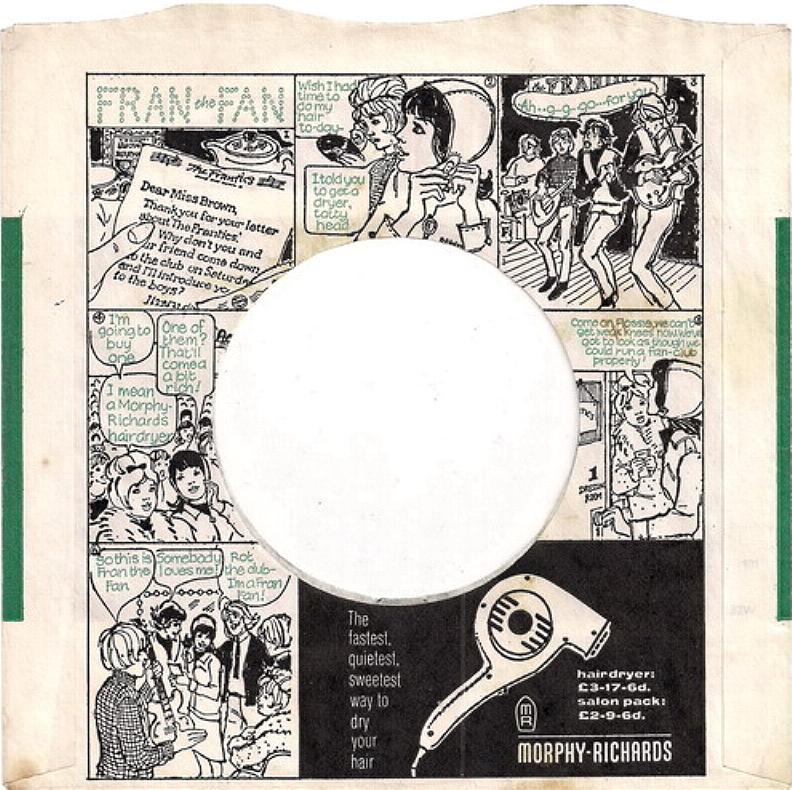
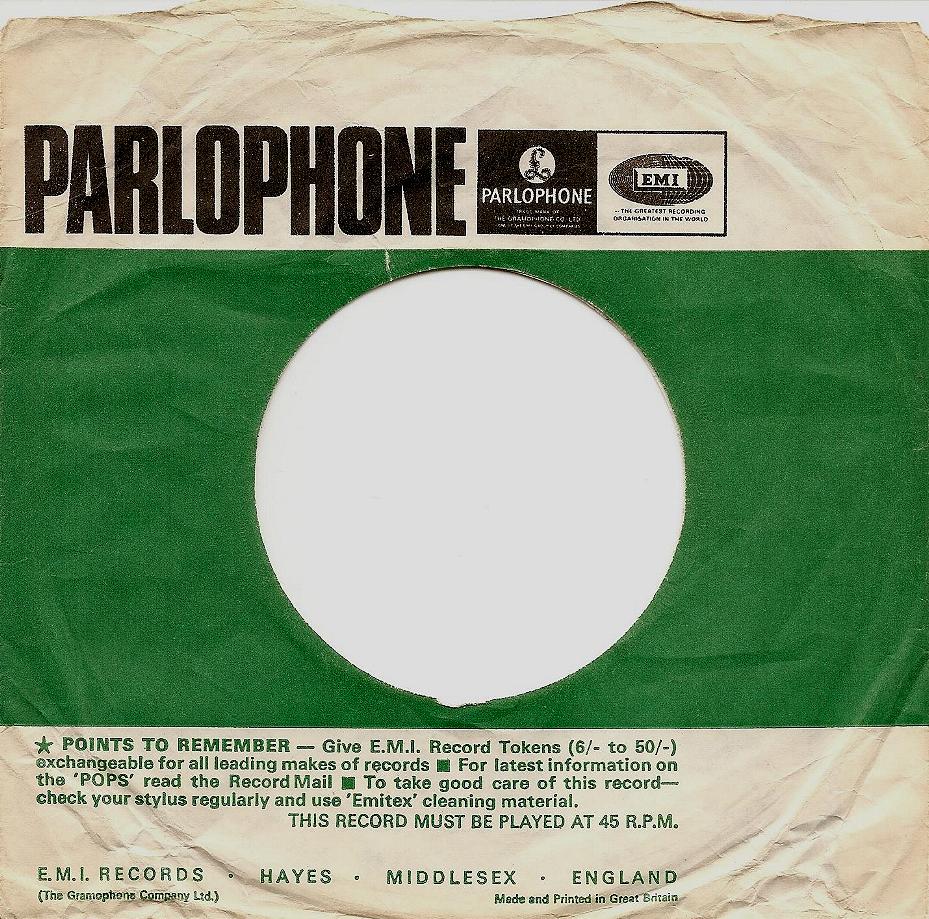
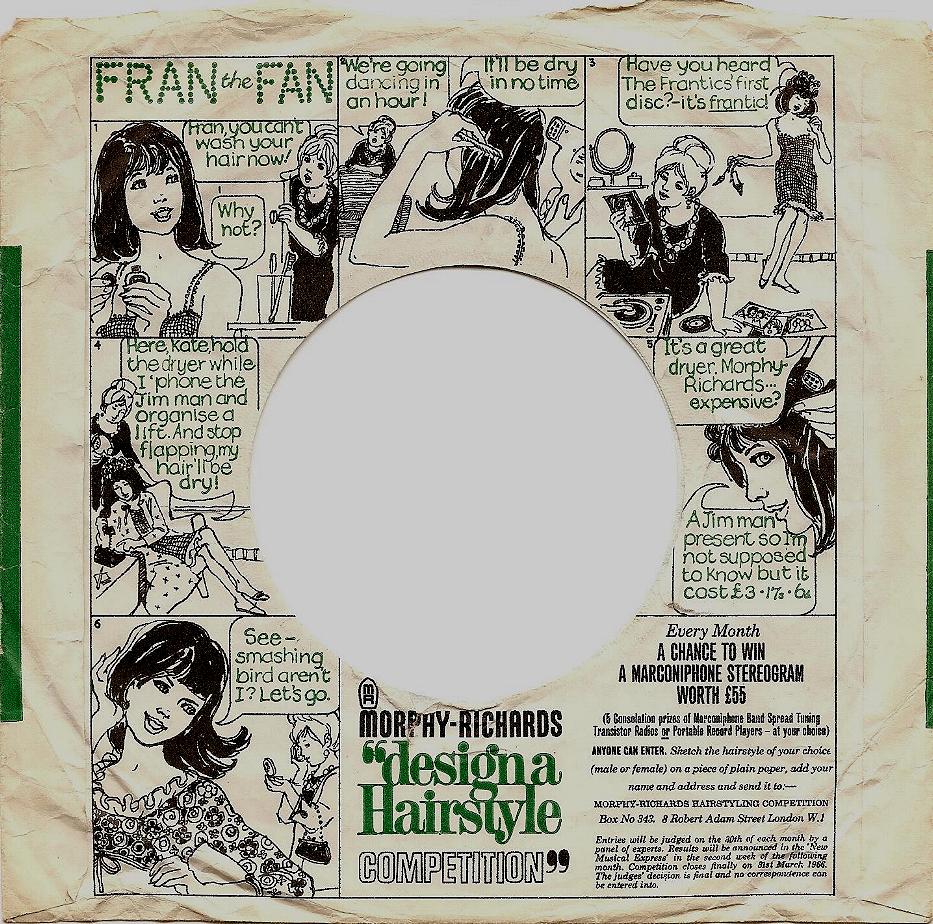
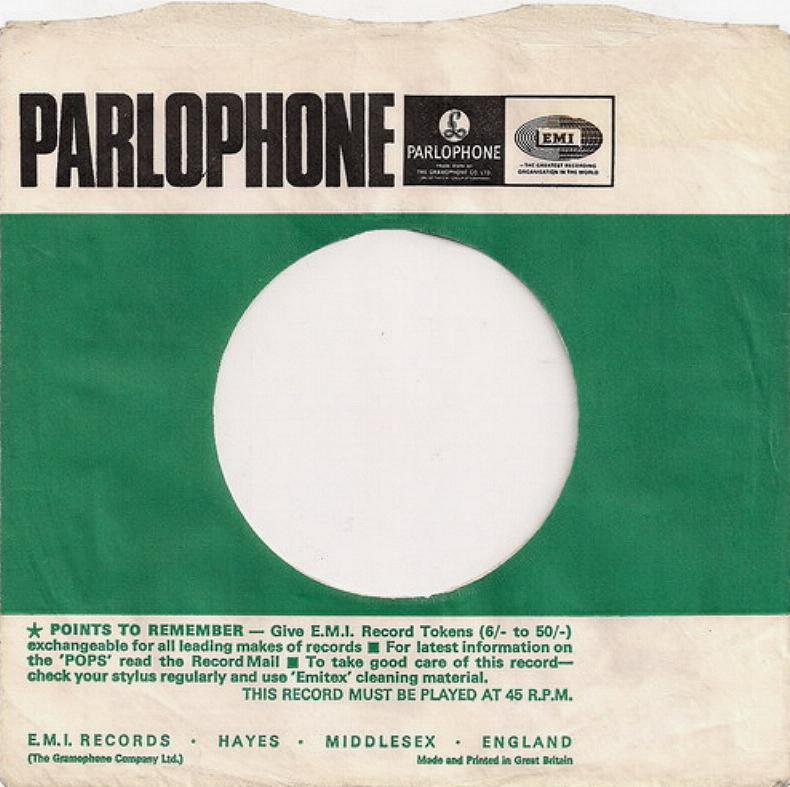
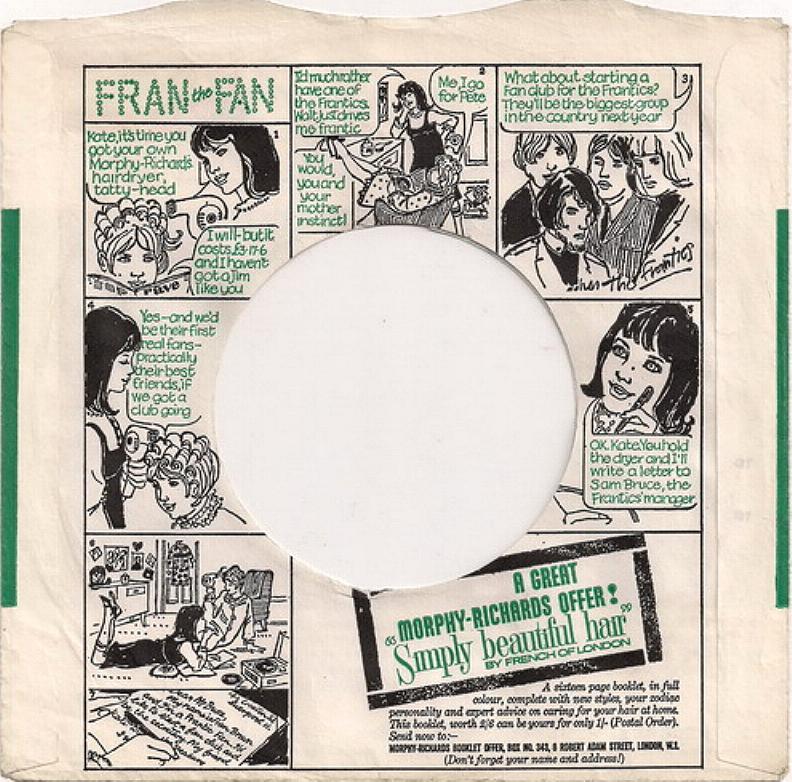
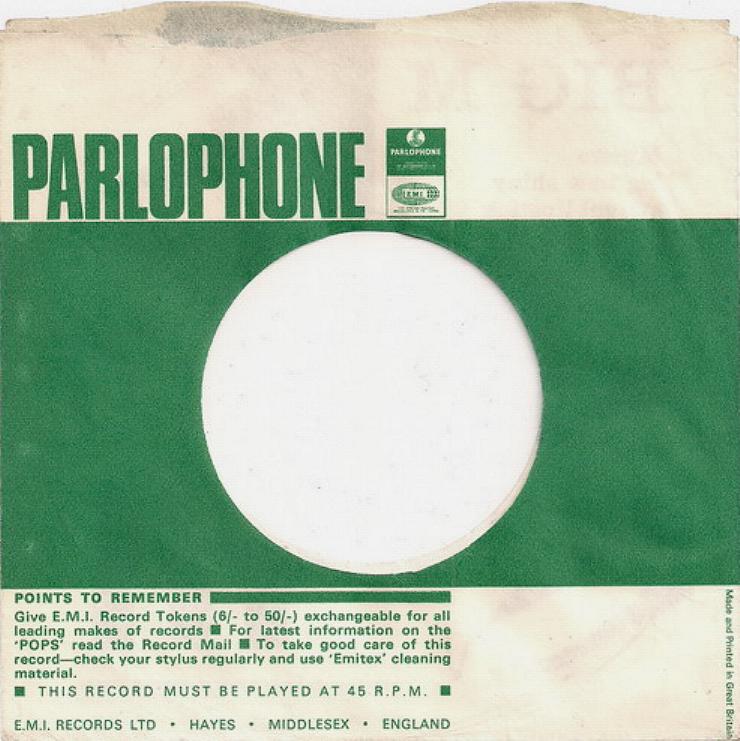
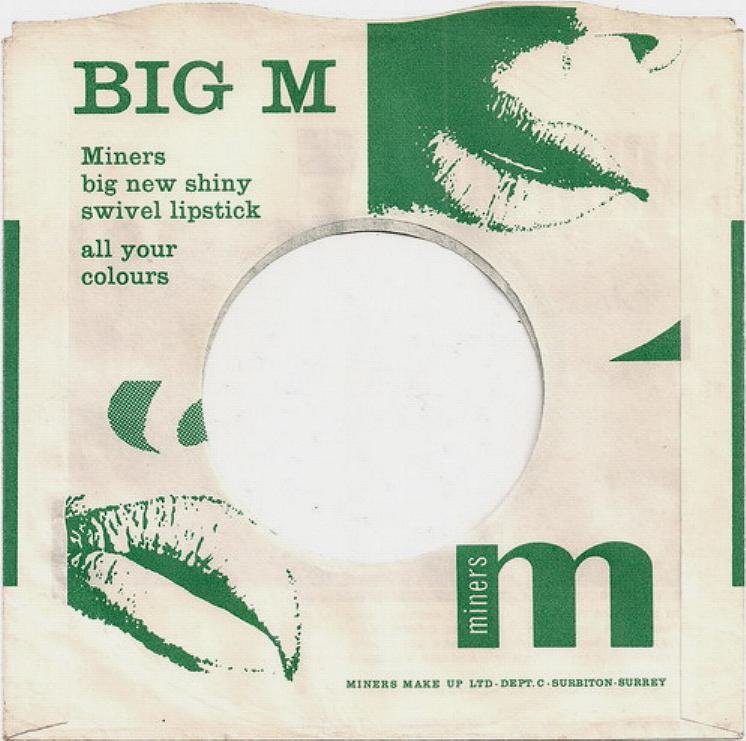
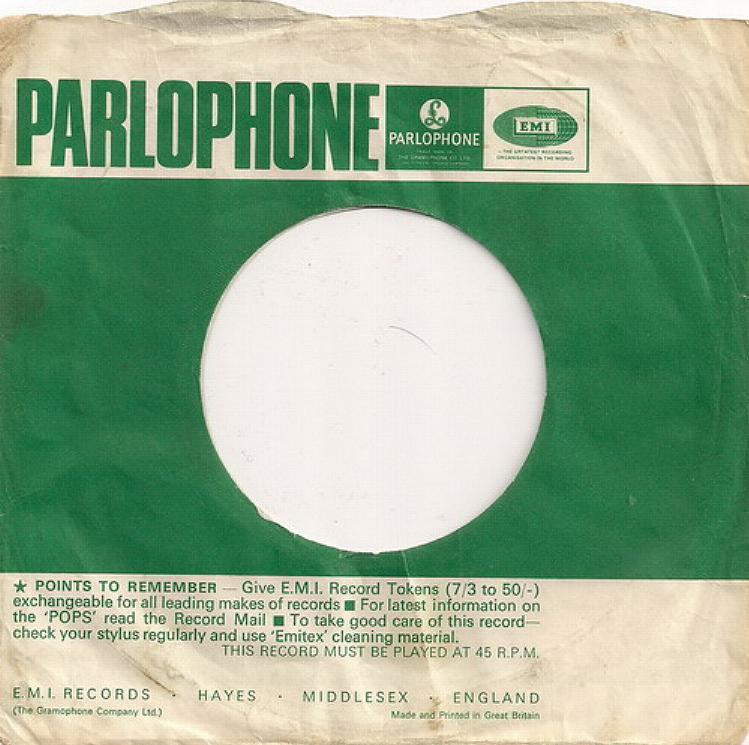
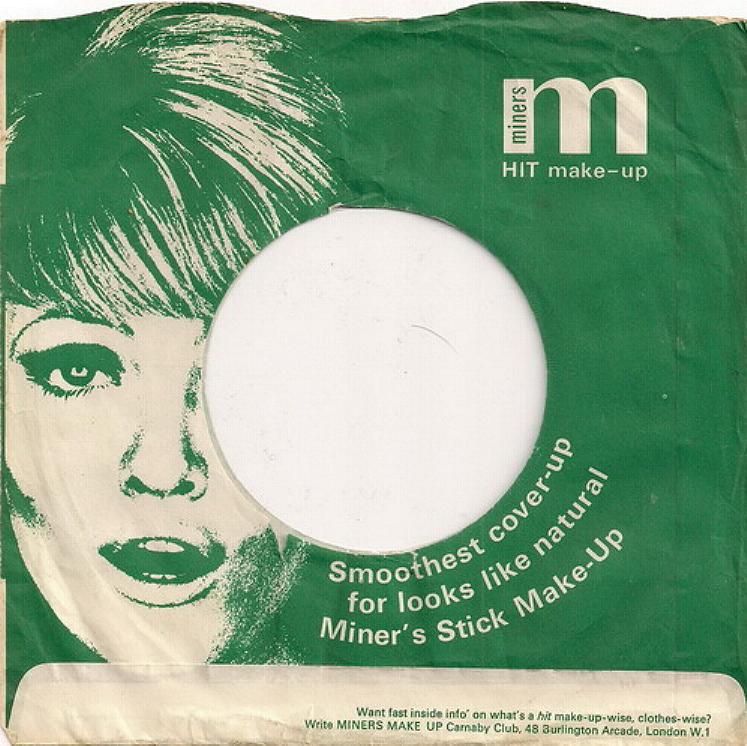
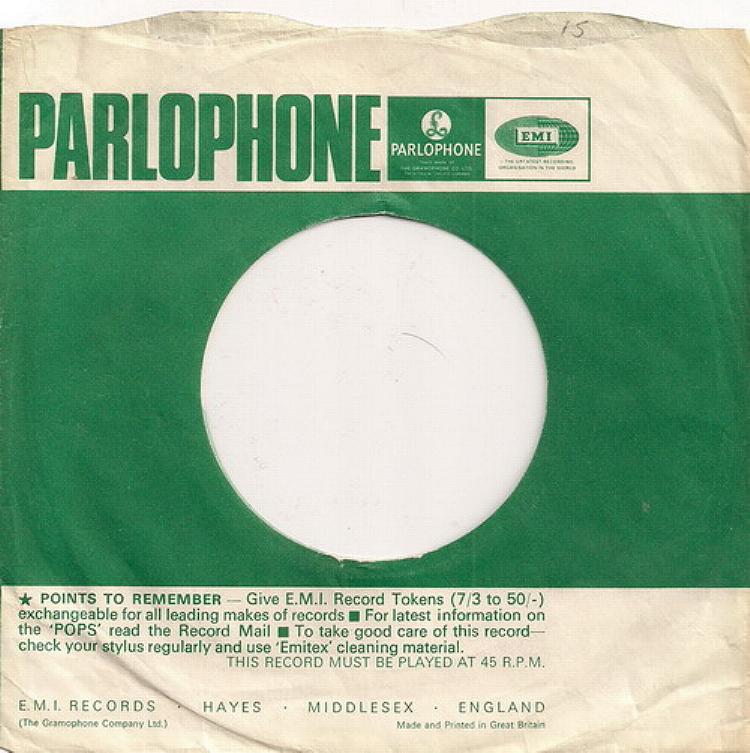
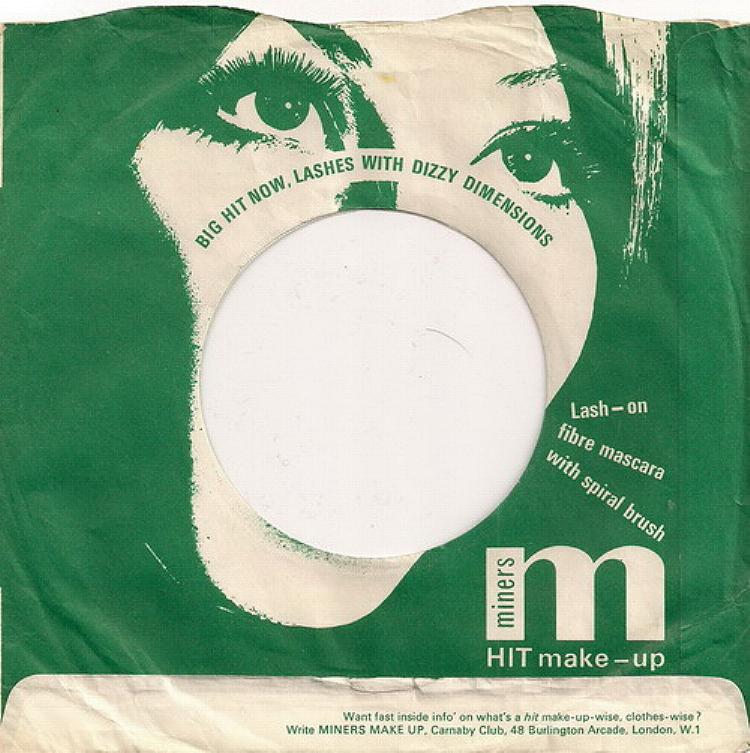
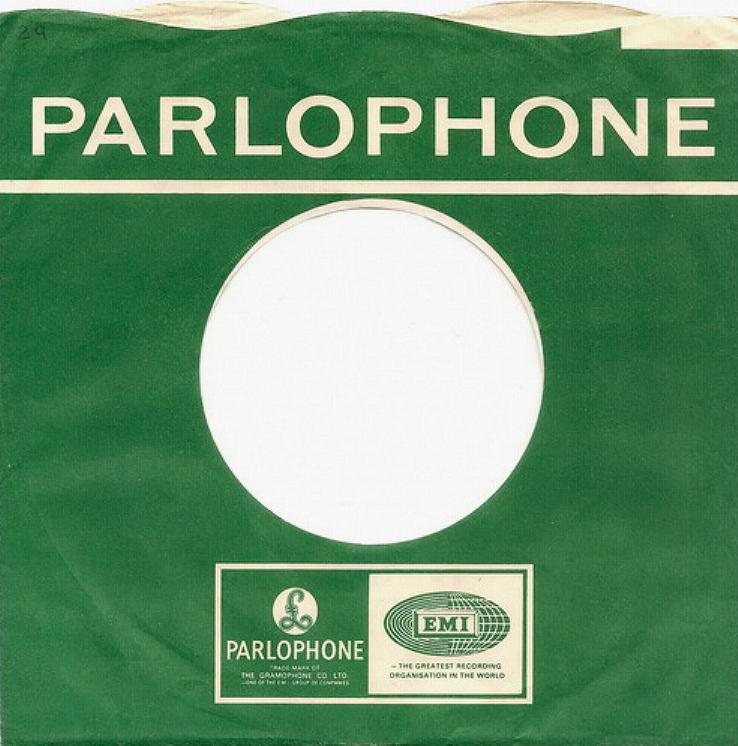
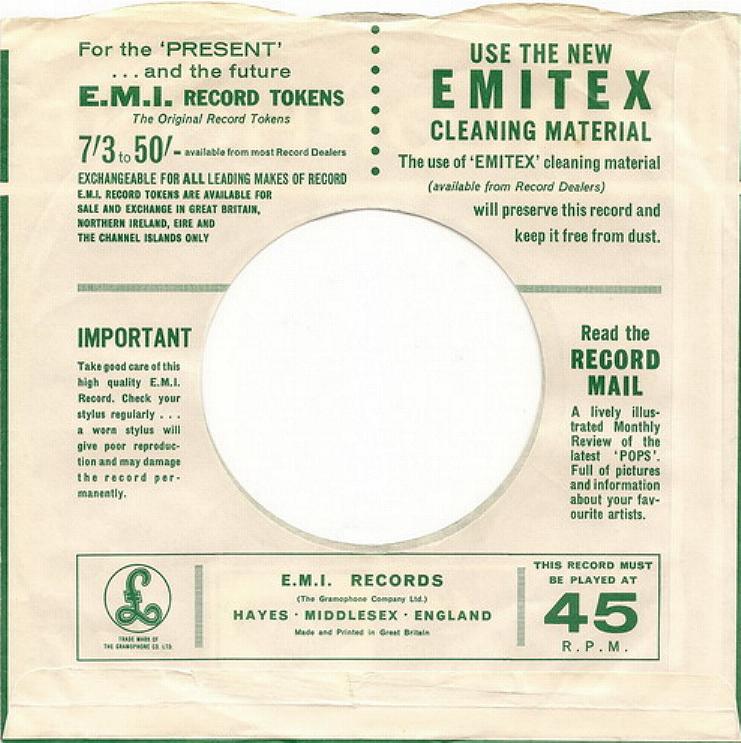
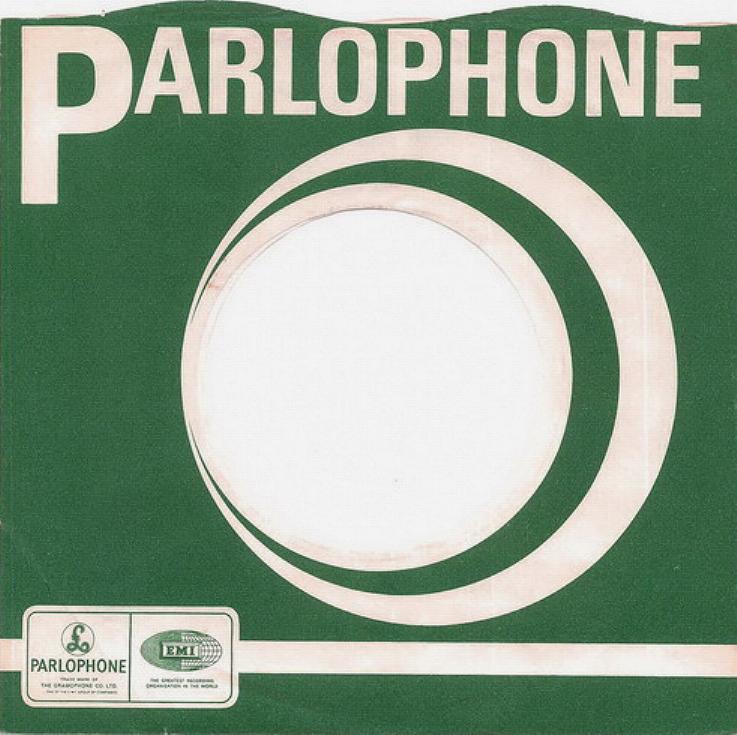
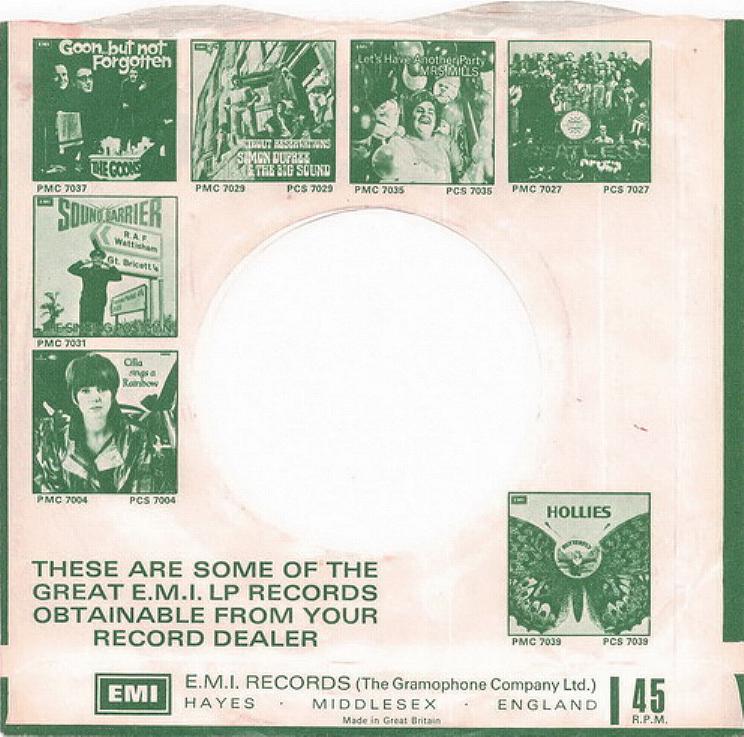
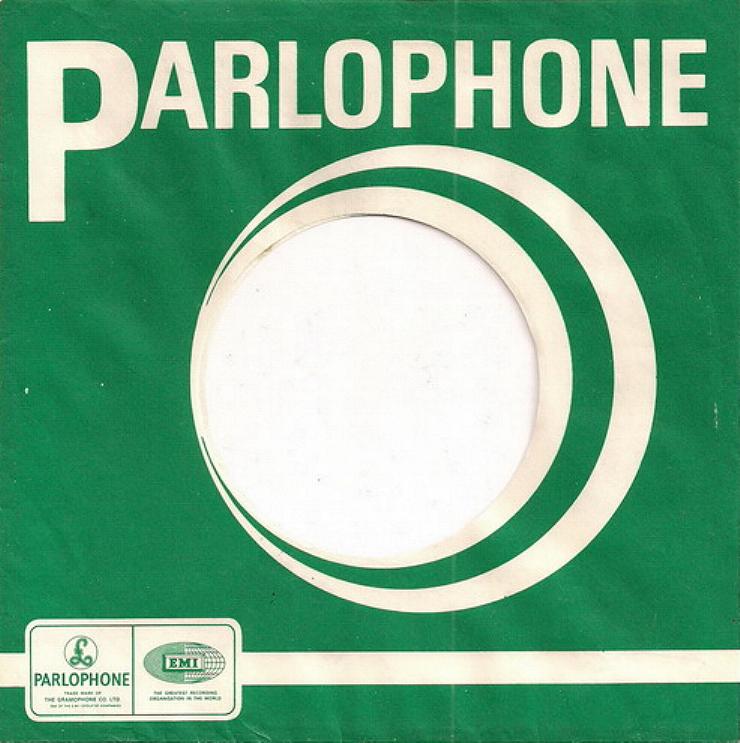
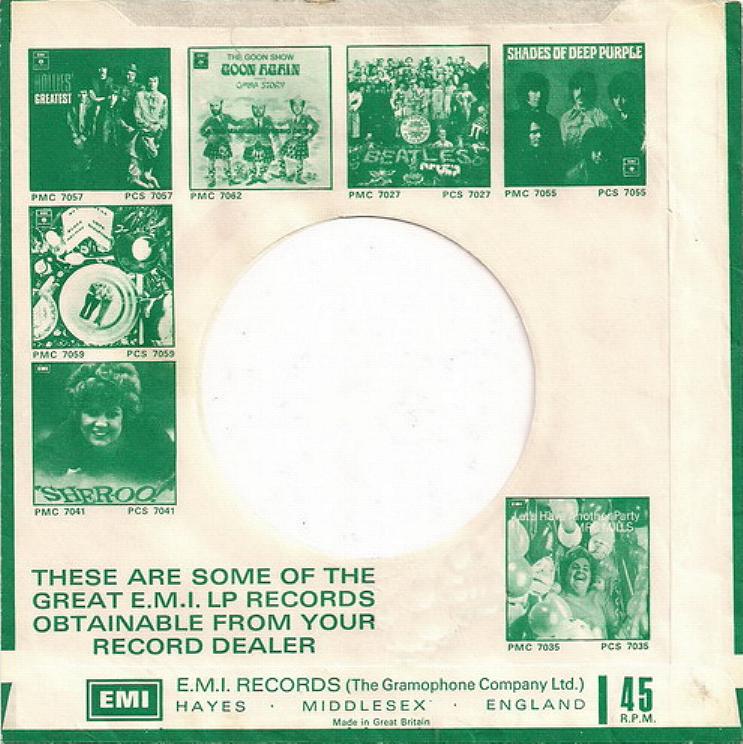






































 RDF URL
RDF URL